






The U.S. Food and Drug Administration (FDA) has proposed a new rule requiring bold, easyto-read nutrition labels on the front of food and beverage packages.
These labels, which would highlight content of sugar, salt and saturated fat, aim to make it easier for shoppers to make healthier choices in the grocery aisle — helping to tackle the rising rates of obesity and conditions such as Type 2 diabetes, heart disease and high blood pressure, a media report from The New York Times states.
These chronic illnesses affect over 60% of American adults and contribute to an estimated $4.5 trillion in annual health care costs, according to the FDA.
“Nearly everyone knows or cares for someone with a chronic disease that is due, in part, to the food we eat,” physician Robert Califf, the commissioner of the FDA, said in a statement released by the administration. “It is time we make it easier for consumers to glance, grab and go.”
The black-and-white labels would appear on the front of products, unlike the current back-of-package Nutrition Facts panel, which lists dietary facts such as calorie counts, serving sizes and ingredients.
The new proposal is the result of three years of research by FDA scientists, who studied similar frontof-package labeling systems used in
Focus group testing of 10,000 people found that the proposed labels were easier to understand and effective at conveying nutrition information, according to the FDA. If the labels are finalized, food manufacturers would have up to four years to comply.
countries like Canada, the United Kingdom and Chile.
Focus group testing of 10,000 people found that these proposed labels were easier to understand and effective at conveying nutrition information, the FDA said.
If the labels are finalized, food manufacturers would have up to four years to comply.
The proposed rule has drawn praise and criticism.
“This proposal is a real step forward in our efforts to better inform
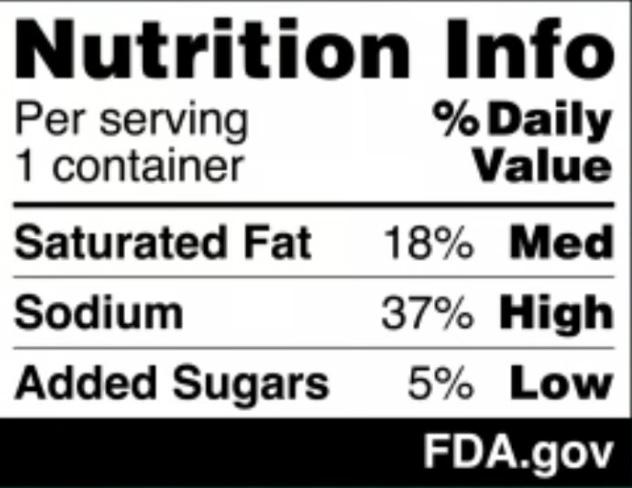
consumers, although we wish the administration had selected a nutrition warning format which is more likely to favorably affect purchasing decisions,” Peter Lurie, executive director of the Center for Science in the Public Interest, an advocacy group that first petitioned the FDA to require frontof-package labels in 2006, told The Times.
The food industry, however, pushed back. Sarah Gallo of the Consumer Brands Association said the labels lack important details, such as calorie counts and the presence of nutrients essential for a healthy diet.
Senator Bernie Sanders also criticized the plan, calling it “pathetically
weak” to address the real dangers of ultra-processed foods, which make up a majority of calories consumed by Americans regularly.
Some experts believe the frontof-package labels could encourage food companies to reformulate products to avoid “high” levels of sugar, salt or fat.
“If you're a retailer selling something that's just above the threshold, you have a lot of incentive to take a little bit of sugar out of your breakfast cereal so it doesn't bear the high label,” Anna Grummon, the director of the Stanford Food Policy Lab, told The Times. “That's a win for consumers.”

— and treating you with the
Hybrid Nurse Aide Training Program ELEMENTAL MANAGEMENT GROUP




Hybrid Nurse Aide Training Program ELEMENTAL MANAGEMENT GROUP







Equip your facility with our unstoppable HYBRID CNA program, empower your team to deliver top-notch care with the strength of a champion.
Equip your facility with our unstoppable HYBRID CNA program, empower your team to deliver top-notch care with the strength of a champion.
Are you looking for an innovative way to attract CNA students? We have your answer
Are you looking for an innovative way to attract CNA students? We have your answer
Are you looking to minimize and most importantly eliminate agency use? We have your solution
Are you looking to minimize and most importantly eliminate agency use? We have your solution
Are you looking to improve morale by increasing your direct care PPD? Reach out to us to hear more
Are you looking to improve morale by increasing your direct care PPD? Reach out to us to hear more
Are you looking to captivate and motivate the newer generation by offering unique and rewarding training opportunities? Look no further contact us today
Are you looking to captivate and motivate the newer generation by offering unique and rewarding training opportunities?

Look no further contact us today
CONTACT:

Peg Reith BSN, RN
Phone: 315-529-3267
CONTACT:
Email: CNA_Training@elementalmgt.com
Peg Reith BSN, RN
Phone: 315-529-3267
Email: CNA_Training@elementalmgt.com










By George W. Chapman
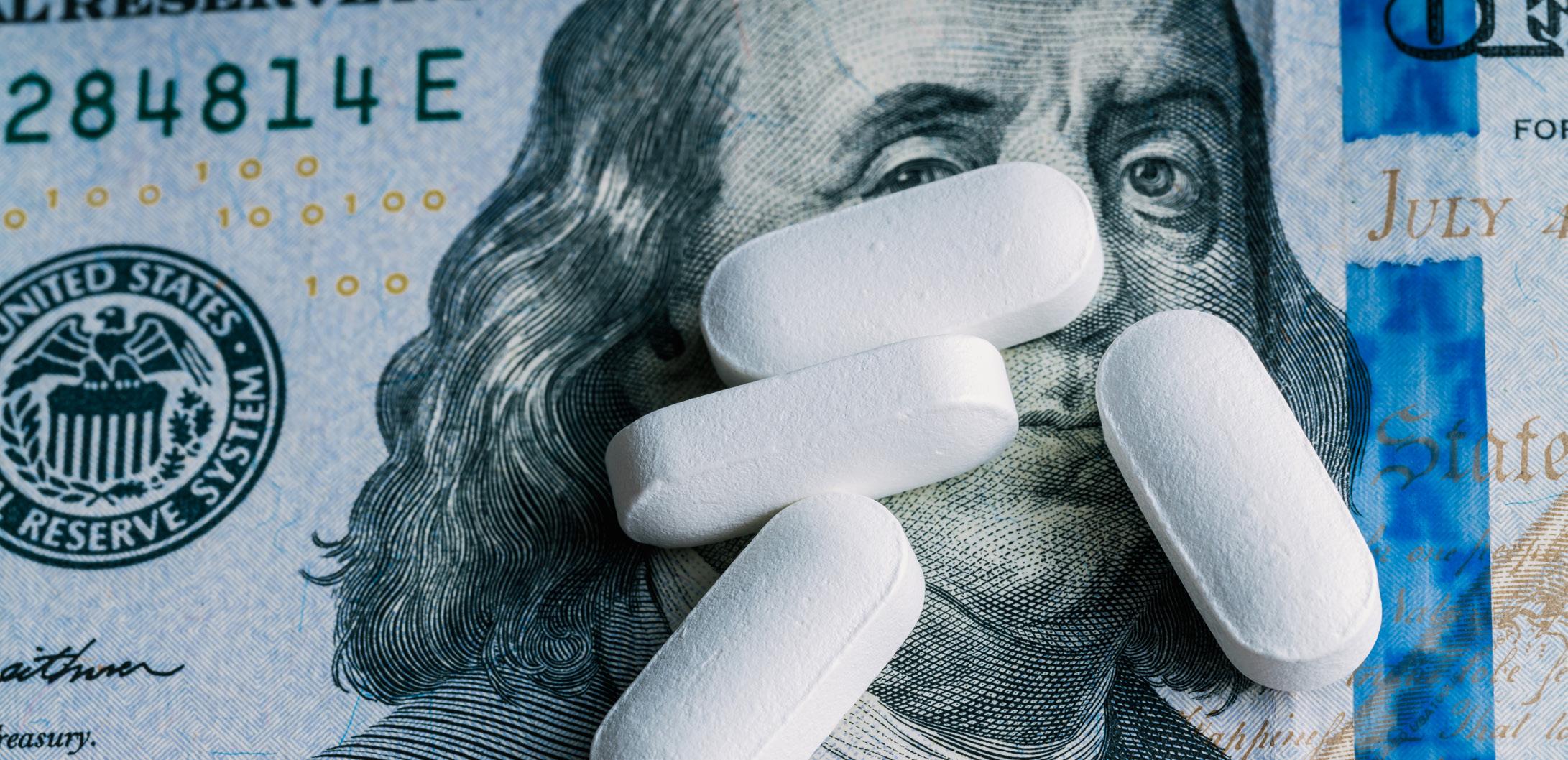
As previously reported, the Inflation Reduction Act (IRA) caps out-of-pocket copays for drugs at $2,000 annually starting this year. This is great news for seniors, many of whom paid a lot more than $2,000 a month in copays.
Unfortunately, the $2,000 cap does not apply to consumers covered by employer commercial plans. Medicare is able to cover the additional cost associated with the $2,000 cap by paying billions less for drugs. That is accomplished by the Inflation Reduction Act (part two) which gives CMS the authority to finally negotiate prices with manufacturers.
Until the IRA, negotiating drug prices was literally prohibited by law which is testament to the power wielded by the drug manufacturers lobby. CMS is allowed to negotiate the price of 10 drugs effective next year. Congress has begrudgingly agreed to allow CMS to negotiate. Why not negotiate all drugs, you ask? It might have a little to do with campaign contributions from the drug lobby. In 2023, members of both sides of the aisle received an average of $57,000. Be that as it may, 10 is better than nothing. If the new administration is looking to cut costs, then what Medicare pays for drugs is a great place to start.
Medical debt has forced many people into personal bank ruptcy. The $2,000 cap on out-of-pocket costs for drugs estab lished by the Inflation Reduction Act may well prevent many bankruptcies for seniors in the future. The Federal Consumer Financial Protection Bureau just issued regulations which (at least) bars medical debt from affecting your credit rating. Credit agencies cannot include your medical debt on credit reports. The regulation also precludes lenders from considering medical debt when considering loans for borrowers. But despite the media
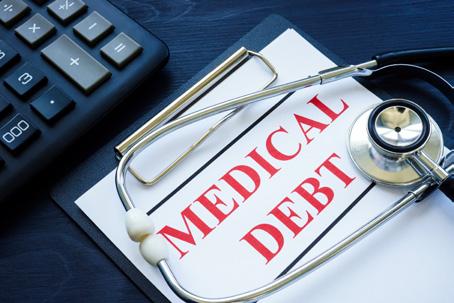
The chart below shows the negotiated price, deemed the MFP or maximum fair price, (fair to whom?) of the 10 drugs prices effective next year, versus the average price paid by countries with universal healthcare. (I couldn't find the current 2025 price per drug paid by Medicare.)
Despite our best effort at negotiations, we are still paying way more than other countries. Imagine the copay for Imbruvia at $10,619 a dose without the $2,000 cap!
The second chart shows the approximate total population in millions of the countries that pay (still) far less than the US despite our-soonto-be "reduced" 2026 price. Medicare
alone covers 70 million people. That is more than the total population of seven of the 10 countries listed. Where is our strength in numbers when it comes to negotiations? Where is our volume discount? The amount of money that would be saved if Medicare could negotiate on behalf of our total population (335 million) would be hundreds of billions. I'm including the savings that would also be achieved by commercial insurers as well. But until the stranglehold the drug lobby has on congress is eliminated, don't expect much improvement in healthcare costs let alone delivery.
if any patients are directly impacted by physician charges as third-party insurance establishes physician reimbursement. Withdrawing from Medicare and commercial insurance and going 100% self-pay is financial suicide. Compounding the Medicare cut is the potential for commercial carriers to mimic Medicare reimbursement and lower their physician payments. The Medicare cut is just another reason for physicians to eschew private practice.
Hacking patient records costs U.S. healthcare almost $2 million a day. In the past six years, breaches have cost U.S. healthcare almost $22 billion. Healthcare organizations incur 17 days of down time per occurrence, according to a report by Comparitech. Six hundred and thirty-four attacks in the last six years affected more than 88 million patient records. Razor-thin operating margins make total cyber security impossible. Medicare and commercial payments do not take into consideration the added costs of cyber security. The advent of AI will only make it easier for the bad guys to hack into information systems. To add insult to injury, Medicare actually penalizes healthcare organizations when they are hacked.

Austrailia
Jardiance $204 $52 $152
Farxiga $182 $54 $128
Eliquis $249 $76 $173
Enbrel $2,335 $764 $1,571
Januvia $117 $39 $78
Novolog $134 $50 $84
Xarelto $200 $82 $118
Entresto $314 $139 $175
Imbruvia $10,619 $5,670 $4,949
Stelara $4,490 $2,822 $1,668
frenzy and uproar over healthcare equity created by the murder of United Healthcare CEO Brian Thompson, don't expect any substantial changes to how healthcare is delivered for the foreseeable future.
Understandably, post-COVID-19, we are hyper aware of any potential epidemic. Bird flu has been getting a lot of attention lately. As of early January, there has been just one death attributed to bird flu or the H5N1 virus. The deceased was a senior (older than 65) resident of Louisiana with multiple underlying medical conditions. He was exposed to a backyard flock of wild birds. To date, there has been no indication the virus
is spreading person to person.
The January bill to fund the govern ment another three months did not include a provision to halt an illogical and unfair 2.8% cut in Medicare physician reimbursement. Considering that inflation is hovering around 3%, the 2.8 % reduction is tantamount to a 5.8% cut. Like all businesses, medical practices content with increasing labor, supply and insurance costs. But unlike other businesses, medical practices cannot compensate for rising costs by increasing charges. Few
If you're having trouble finding a mental health provider, you're not alone. Roughly half of mental health pro viders accept insurance and almost as many don't accept new patients. According to a Wall Street Journal survey, only 44% of Ph.D.s and psychologists accept insurance, let alone new patients. Many people are frustrated because the dearth of in-network providers creates long wait times of often several months. Online therapy is attempting to fill the void. Forbes Health has rated online providers. The top nine are: BetterHealth, Talkiatry, Cerebral, Talkspace, Brightside, Regain, Team Counseling, Faithful Counsel and Our Ritual. Services include depression, anxiety, stress, anger management, insomnia, panic attacks, eating disorders, trauma, relationships, life counseling, bereavement and more. Per Forbes, the best online therapy options were broad telehealth sites that include therapists: Amwell, Doctor On Demand and MD Live. You can get traditional therapy appointments focused on live video sessions. Ongoing therapy may require a subscription. It is best to contact your insurer before proceeding.
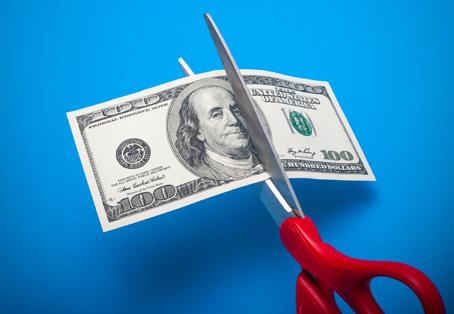

George W. Chapman is a healthcare business consultant who works exclusively with physicians, hospitals and healthcare organizations. He operates GW Chapman Consulting based in Syracuse.

Those
who drink coffee exclusively in the morning benefit the most
For many, coffee is a beloved morning ritual, fueling the day ahead. But what if the time you drink it could influence how long — and how well — you live?
New research published Jan. 8 in the European Heart Journal suggests that when you enjoy your cup of joe might be just as important as how much you drink.
The study shows consuming coffee only in the morning was linked to a 16% lower risk of premature death and a 31% reduced risk of dying from cardiovascular disease compared to non-coffee drinkers.
"This is the first study testing coffee drinking timing patterns and health outcomes," lead study author Lu Qi, a professor of public health at Tulane University, said in a news release.
"We don't typically give advice about timing in our dietary guidance, but perhaps we should be thinking about this in the future."
Researchers analyzed data from over 40,000 adults aged 18 and up using dietary records collected between 1999 and 2018. Coffee consumption was divided into three timeframes: morning (from 4 a.m. to 11:59 a.m.), afternoon (from 12 p.m. to 4:59 p.m.), and evening (from 5 p.m. to 3:59 a.m.)
Results show that those who
drank coffee exclusively in the morn ing benefited the most in terms of longevity and heart health.
Meanwhile, folks who drank coffee throughout the day saw no significant reduction in risk.
Get the Upstate Advantage for your career!
As the region’s largest employer Upstate offers more jobs and more variety, with great benefits.
Visit our website to see the most recent offerings.

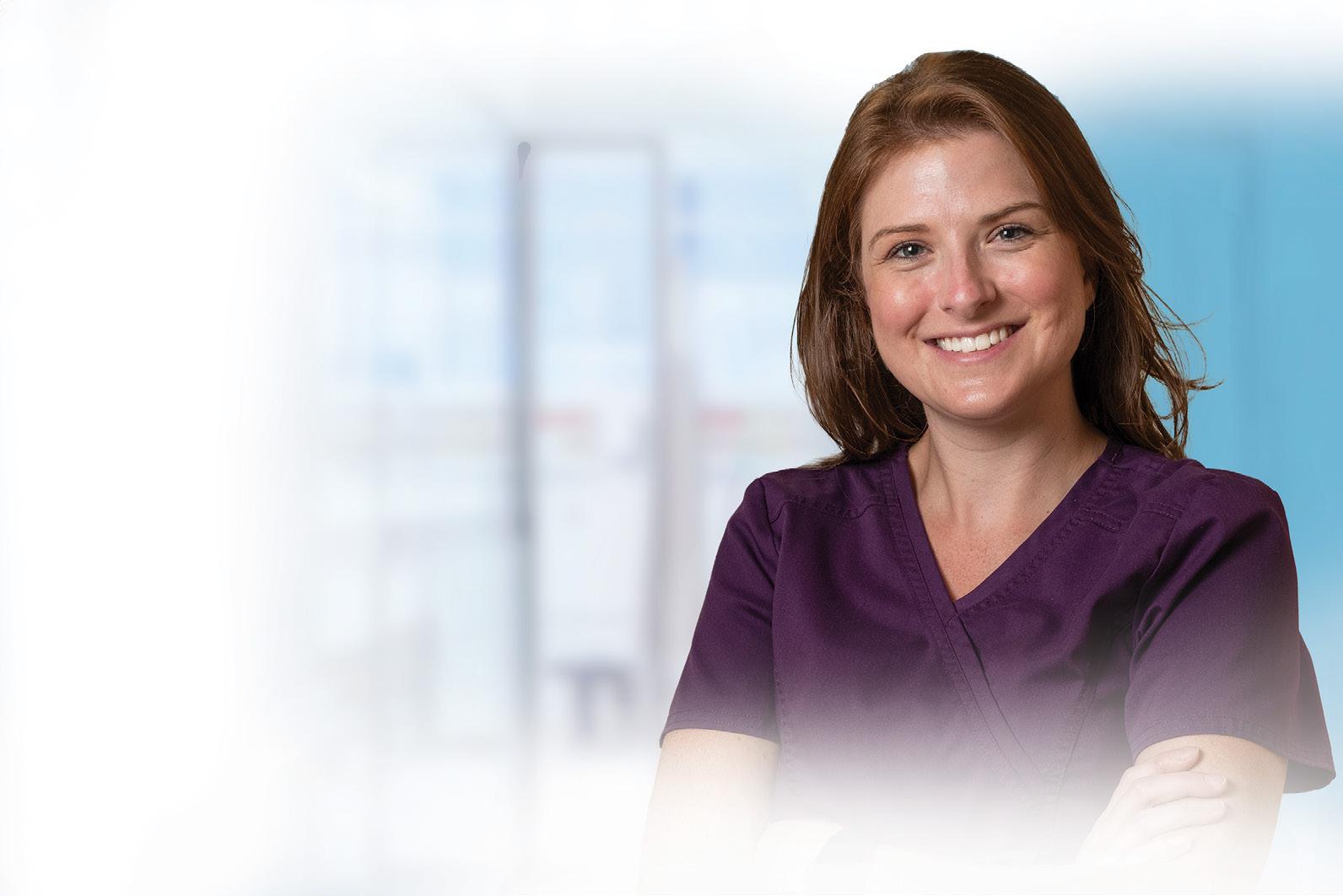
The findings held true regardless of whether participants drank caffeinated or decaffeinated coffee, and the amount consumed — whether they drank less than one cup or more than three — didn't impact the benefits.
So, why does timing matter?
Experts agree that the timing of coffee intake may influence your circadian rhythm and hormone levels. Drinking coffee later in the day, even if we feel like we need it, may disrupt melatonin production, a hormone that regulates sleep and influences heart health.
According to study authors, some inflammatory markers in the blood have their own clocks. And the anti-inflammatory effects of coffee may be more effective when consumed in the morning, when these markers peak.
However, the study was observational and cannot prove causation, noted Vanessa King, a registered dietitian nutritionist and spokesperson for the Academy of Nutrition and Dietetics who wasn't involved in the study, told CNN.
A monthly newspaper published by Local News, Inc. 20,000 copies distributed. To request home delivery ($21 per year), call 315-749-7070.
In Good Health is published 12 times a year by Local News, Inc. © 2025 by Local News, Inc. All rights reserved. 4 Riverside Drive, # 251, Utica, NY 13502 Phone: 315-749-7070 • Email: IGHmohawkvalley@gmail.com
Editor & Publisher: Wagner Dotto • Associate Editor: Stefan Yablonski
Contributing Writers: Barbara Pierce, Deb Dittner, Gwenn Voelckers, David Podos, Deborah Jeanne Sergeant, Anne Palumbo, Jolene Cleaver, Eva Briggs (MD) Advertising: Amy Gagliano: 315-402-3370 • Email: amyIGHmv@gmail.com
Layout & Design: Angel Campos-Toro • Office Manager: Allison Lockwood
No material may be reproduced in whole or in part from this publication without the express written permission of the publisher. The information in this publication is intended to complement — not to take the place of — the recommendations of your healthcare provider.
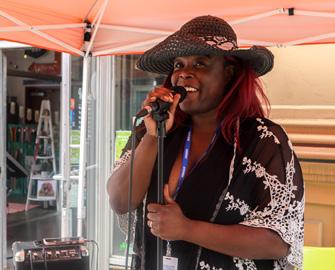






By Gwenn Voelckers
By Gwenn Voelckers
In 1993, I purchased the home I still live in today.
At the closing, I became the proud owner of someone else’s dream home, complete with bright green shag carpet, a Pepto Bismal pink powder room and lacy bedroom curtains hanging in the living room.
What was I thinking?!
But I was convinced of the home’s potential and began a gradual, thoughtful and very rewarding process of making this home my own.
Looking back, I now realize that creating a home that is joyful, inspiring and uniquely mine was one of the most empowering things I did for myself after my divorce.
It was an essential part of starting my life over as a woman on her own.
If you are now living alone — whether due to a divorce, the loss of a partner or some other major life change — know that, while daunting, a fresh start can be incredibly liberating.
Designing your space for the person you are now, not the person you used to be, can support your journey toward happiness and fulfillment.
Let your home be your launchpad for the next phase of your life.
So, how do you design a space that reflects your singular style and spirit, especially if you are navigating
life on your own for the first time?
Here are some insights and tips that have helped me along the way.
Intuitively, I knew I needed to walk through my new front door and into my very own “warm embrace,” a place where I would be surrounded and uplifted by all things familiar and friendly.
So, I set out to create a retreat — a personal sanctuary where I could feel safe and sound, inspired and creative.
One of the first things I did when I bought my home (after I tore out the green shag carpet) was to frame and display photographs of family and friends. I wanted to see their faces when I entered a room, to be reminded of good times and the love that surrounds me.
In addition to photos, I adorned my living space with original pieces of art (now more boho!) and artifacts or souvenirs I collected on my travels. These cherished mementos and images lifted my spirits back then and continue to do so.
I encourage you to surround yourself with treasured items that reinforce both who you are and who you want to become. Whether it’s art, books you love, fresh flowers or
a favorite blanket, infuse your space with décor and possessions that make you smile.
Japanese author and organizer Marie Kondo’s famous phrase, “Does it spark joy?” became my mantra when I started the process of decluttering.
As she instructed, I took a deep breath and asked myself: "Does this truly make me happy? Does this piece of furniture, these old clothes, or that vase from my wedding still bring me joy?"
It was hard at first. There were items that carried sentimental value or that I thought I should keep because "that’s what you do." But once I embraced the idea of letting go of anything that didn’t spark joy, I felt an incredible weight lift off my shoulders.
If an object doesn’t bring you joy, let it go. By clearing your space of things that no longer align with who you are today, you make room for the things that truly do resonate with the person you aspire to be.
I’ll get to the point: Anything that makes you feel bad when you look at it should be thrown out, donated or repaired. Ratty dishtowels, old lampshades and faded curtains, for example, can dampen your mood and erode your self-esteem.
Don’t underestimate the negative power of unsightly or outdated objects.
I walked into my kitchen last week and cringed (for the 100th time) when I looked at my faded and frayed kitchen mat. I threw it out and grabbed a small oriental rug from my guest bedroom to put in its place. It looks and works great! Yes, it’s a little unconventional for the kitchen, but I feel good every time I see it. What took me so long? I need to
follow my own advice!
Create Spaces That Inspire, Lift You Up and Nurture Personal Growth
One of the most powerful things about living alone is that you have the freedom to design your home exactly how you want it. No compromises, no negotiations. You get to choose every color, every piece of furniture and every layout.
Over the years, I’ve come to realize that my home is more than just a place to live — it’s a place that inspires and supports my continuously evolving self.
For example, as my passion for music grew, my home gradually transformed into a tangible expression of this newfound love.
My living room now sports my drum kit, bongos and assorted percussion instrument. Again, unconventional, but it reflects who I am today.
Designing spaces in your home that nurture your growth — whether it’s a meditation corner, a cozy writing desk or a place for artistic expression — can help you move forward.
Creating a home that is joyful, authentic and aligned with your true self is one of the most empowering things you can do for yourself.
Remember, you are not defined by your past, your circumstances or your former relationships. Your home can become an oasis of creativity and independence — a place that’s unconditionally yours, absent of compromise. Claim it.
Once you make your personal space your own, there’s no place like home!
Gwenn Voelckers is the author of "Alone and Content," a collection of inspiring essays for those who live alone. She welcomes your comments about this column and topic suggestions for future columns at gvoelckers@rochester.rr.com
Too much screen time can sabotage preschoolers' sleep, potentially turning them into terrors around the house, a new study warns.
Bad sleep can exacerbate children's struggles with poor attention, hyperactivity and moodiness, researchers reported Dec. 12 in the journal “Early Child Development and Care.”
Worse, kids can wind up in a downward spiral, with screen time and poor sleep feeding off each other.
“Our results suggest the presence of a positive feedback loop, wherein increased screen time and sleep disturbances exacerbate each other
through cyclic reinforcement, heightening the risk of hyperactive attention problems, anxiety and depression,” said researcher Bowen Xiao, an expert in children's socio-emotional functioning and developmental psychopathology with Carleton University in Canada.
For the study, researchers surveyed the mothers of 571 preschool children between the ages of 3 and 6 who were attending seven public kindergartens in Shanghai.
Moms reported the amount of time their kids spent with a TV, smartphone, computer or other screen device. They also answered questions to assess any behavioral

problems their kids might have, as well as the quality and duration of their sleep.
“Our results indicate that excessive screen time can leave the brains of preschool children in an excited state, leading to poor sleep quality and duration,” said researcher Yan Li, an expert in preschool education from Shanghai Normal University.
Researchers also noted that prior research has indicated that screen time can lead to hyperactivity and emotional problems among kids.
This study suggests that screen time might be the reason why, researchers said.
“This poor sleep may be due
to postponed bedtimes caused by screen viewing and the disruption of sleep patterns due to overstimulation and blue-light exposure,” added lead author Shujin Zhou, a doctor of psychology with Shanghai Normal University.
“Screen use might also displace time that could have been spent sleeping and increase levels of physiological and psychological arousal, leading to difficulties in falling asleep,” Zhou said in a journal news release.
These results could point the way toward future treatments for hyperactivity and mood problems among young children, Zhou said.
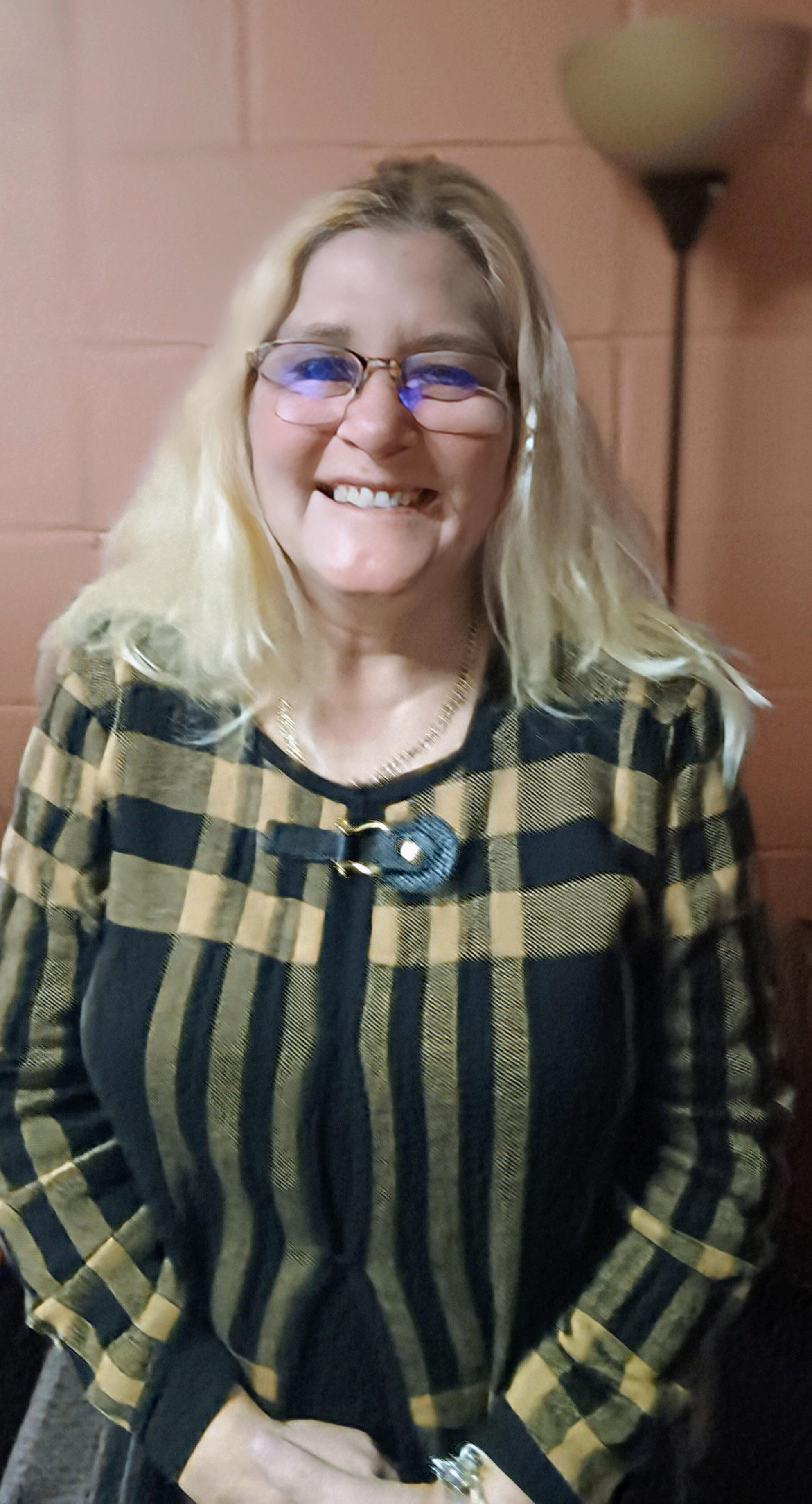
Executive director of 50 Forward Mohawk Valley discusses how the group is helping seniors in the region
By David L. Podos
Q: What is 50 Forward Mohawk Valley?
A: We are the oldest and largest senior center service provider in Oneida County.
Q: When you say you are the oldest when did it all start?
A: We started in 1957 with Senior Days out of Utica as well as Senior Services out of Utica. Eventually we merged and rebranded with a new name, Elder Life and that was in 1998. We became 50 Forward back in 2021.
Q: How many locations do you have?
A: We have three locations. So, we are at the Parkway Rec Center
woman Marianne Buttenschon.
Q: How many employees do you presently have and I believe you also have a very strong volunteer presence as well, is that correct?
A: We are at 17 employees which includes both full-time and part-time. In regards to our volunteers we are so fortunate to have a dedicated and robust volunteer base. In 2025 we will be focusing a lot of energy on discovering volunteering. We are the go-to for volunteer opportunities for older adults. We also have partnerships throughout Oneida County with different nonprofits to provide volunteers.
Q: Besides the obvious of a good feeling lending a helping hand to someone in need, what other benefits do volunteers say they receive?
A: That’s a great question. So, let me first start off by mentioning what our mission is, which is to provide programs and services to individuals 50 years of age and older; to keep them healthy and independent as possible so they can live vibrant and healthy lives. That can be from our fitness programs that we offer, social engagement programs, transportation that we provide (through our volunteers) that helps a person to keep their doctor appointments, etc. In regards to benefits that our volunteers receive there are many. Volunteering is a key component of healthy living. Whether we hear it from the volunteers themselves and or the people that they help. This has a win- win effect.
Q: I came across an article published by the Mayo Clinic that talked about the health benefits for those who volunteer. They say that volunteer activities keep people moving and thinking at the same time. And what I thought quite interesting was their research has found that volunteering among adults age 60 and over provided benefits to physical and mental health, as well as volunteers having a low mortality rate. Are you finding similar benefits when you talk to your volunteers?

building in Utica, our second location is at Verona Beach, Verona, and our third location is at the West Side Senior Center in Utica. We had a regrant opening of that location this past September where we did a $2 million renovation project. At that time 50 Forward took over operations of the West Side Senior Center.
Q: Where did the money come from to complete that project?
A: The money came from a number of sources, The city of Utica, Oneida County, The Community Foundation and DASNY [Dormitory Authority of the State of New York] and that particular funding was through the efforts of our Assembly-
A: Absolutely, the benefits they are receiving that they tell us are very similar to the benefits you mentioned from the Mayo Clinic research. First and foremost, they [the volunteers] really want to help other people and when helping others, they feel good because they are also helping themselves. For example, our volunteer drivers. Oftentimes after they have taken someone to a doctor’s appointment, that very day the client will call us and say how grateful they are for that service and how wonderful the driver was. That really makes a volunteer’s day when they hear that, and being happy can make you feel really, really good. It is heartwarming!
Q: If someone wanted to volunteer and was interested in where they could best fit in, who would they call?
A: There are several ways. They can stop in at any of our locations or call. We have two volunteer coordinators; they can ask for David at 315223-3973 or call our Verona Beach office at 315- 235-2029 and ask for Stephanie.
More information about 50 Forward can be found o info@50forwardmv.org

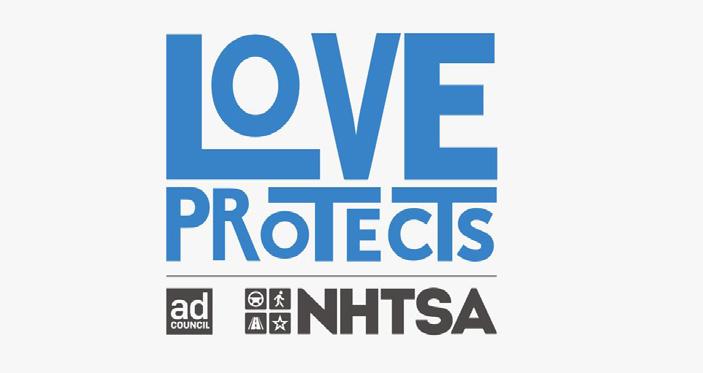
and tubing. It features a newly renovated lodge with a fireplace, bar, restaurant and cafeteria.
By Barbara Pierce
It’s February. Winter is in full throttle with a lot of snow, ice and low temperatures.
Winter does get a bad rap. When you’re scraping the ice off your windshield or you’ve just slipped on the ice heading out the door, it can be hard to remember this — but winter is a state of mind.
“I refuse to let winter get on top of me. In fact, I positively enjoy it, at least until it outstays its welcome around the end of February,” said Tim Snaith online at healthline.com. “But up until then, I revel in the opportunity to hunker down with a pile of books, a new hobby and seasonal food and drink. Those long evenings are a great time to plan, take stock and adjust my priorities. While the summer is more about exploring the outside world, the winter is about restocking my mental larder.”
Jennifer Jones said on Facebook: “I look forward to the gray, quiet time for solitude, contemplation, reading, long conversations with friends. Colors are softer, sounds have more depth, the pace is gentler. Instead of resentment at the lack of sun, snuggle into the gray velvet quilt and make yourself a cup of tea.”
Experts suggest instead of dwelling on winter’s limitations, we lean into the long nights and extra time at home as those quotes above demon-

strate. Time to read, maybe explore a new activity, enjoy a cup of hot chocolate; sometimes it just feels good to hold the cup! And there’s nothing cozier than sitting by a flickering fire or watching the snow fall outside your window.
During the summer, you probably don’t have time for baking cookies, crafting, painting, knitting, reading or playing video games. Winter can be your time of year to indulge in these activities. Winter can be a time when you enjoy those slower activities and enjoy things you don’t normally do.
Think about bringing plants inside to wait out the winter. Having something green in your home will bolster a feeling of well-being. If you’re not a plant person, consider other ways to add a pop of something colorful to your home. Maybe a new painting to liven up a wall, or a bold rug.
Consider spending more time outside to fight the winter blahs. Being active and experiencing nature are natural antidepressants. Sometimes, the winter looks a lot harsher than it actually is. So, experiment: See if you can override your expectations about how terrible it will be outside. Put on your warmest clothes and go outside; you might be surprised that it’s not as bad as you expected. And
Basking in a sauna can be a nice way to relieve stress or relax muscles following a workout. But soaking too long can increase a person’s risk of heat stroke, particularly if they aren’t well-hydrated, doctors warn.
Most cases of heat stroke occur on hot days, due to overexertion, researchers say.
However, “sauna use is a rare but potentially important cause of classical heat stroke,” physician William Jack McIver with Birmingham Heartlands Hospital in the UK wrote in a study published Jan. 7 in the journal BMJ Case Reports.
The new paper cited 10 cases of heat stroke caused by too much time in a sauna, including three that resulted in death.
The most recent case involved a woman in her early 70s who’d been found unconscious in her local gym’s
sauna, where she had been doing stretching exercises for about 45 minutes.
Her core body temperature registered more than 107 degrees F. by the time paramedics arrived. Her blood pressure was extremely low, and her heart rate was extremely high.
“My experience has emphasized the dangers of saunas and how important it is to be fully hydrated on entering a sauna and for them to be regularly checked by staff,” said the woman, as quoted in the study. “As a regular sauna user I never suffered any issues and, on reflection, I believe I had not drunk enough water.”
“I am pleased to say I’m feeling well and appear to have made a full recovery,” she added.
The woman was lucky, McIver says.
“Classical heat stroke in elderly people carries a mortality rate of
you’ll feel better for doing it.
We live in a great area for winter fun things to do: snowshoeing, snowmobiling, ice skating, sleigh rides. Getting out and enjoying these winter fun things is the key to surviving — even thriving.
For example, there’s Woods Valley in Westernville.
“Woods Valley is the perfect place to spend your winter,” said Nuala Woods. “We offer skiing, snowboarding and tubing. We have a new rental fleet and offer lessons. For those who prefer to stay inside, we have a beautiful, newly renovated lodge with a fireplace, bar, restaurant and cafeteria. We have bands most days, nights.”
See www.woodsvalleyskiarea. com for more information.
The J.F. Kennedy Civic Arena is one of Rome’s most popular venues, used primarily for ice hockey and figure skating in the winter.
“We offer a special event in February,” said Ryan Hickey. On Thursday, Feb. 22, we team up with Center for Family Life and Recovery to offer the Winter Bash from 1-2:30 p.m. Admission is free with skate rentals just $3. Free hot cocoa and popcorn offered to all children in
attendance. Crafts and activities will also be offered.
“Also, we’ll be offering a Valentine Skate on Feb. 14 at 7:30 p.m.” he added. “Free hot cocoa and popcorn for children. Admission is free; skate rentals just $3.”
A sleigh ride sounds like a fun way to get through the February doldrums.
“Lamplit Farm provides scenic sleigh rides at our farm near Chittenango Falls,” said owner Woody Woodworth. “We have Belgian and Percheron draft horses and a sleigh that can accommodate up to 10 adults on comfortable bench seats. We travel through fields and wooded areas with panoramic views of the Oneida Lake basin. Rides are approximately 40 minutes long.”
See Lamplit Farm on Facebook for details.
Keep in mind that complaining about the weather doesn’t help. Complaining only makes you feel worse. So, don’t winter-bash. Instead, talk about winter in positive terms. Instead of counting the days until spring, embrace winter. Discover all of winter’s unique opportunities — even on the darkest evenings, in fact especially then.

more than 50%, and this increases further with each additional organ dysfunction,” McIver wrote in his report.
Getting a person’s temperature back to normal is vital to ensuring their survival, he further explained.
“Once heat stroke has occurred, the key determinate of outcome is how rapidly a patient is cooled, as the time spent with elevated core body temperature is correlated to the degree of cellular damage,” McIver concluded.

“If you sit in the question, the answer finds you,” said a character in a movie I watched a few days ago.
Makes sense to me. In fact, I’m right now sitting in a question.
I have a decision to make. For two years, I’ve lived in this apartment; I like it a lot. I’ve got good friends nearby and a community of caring people. However, the reasons to move to a town near my daughter are equally compelling. The pros and cons are pretty much equal.
Then there’s the man I’m living with. He has dementia.
Should he move with me or should we find an assisted living community for him?
I’ve asked him what he would like to do, but he’s past the point of being able to think things through and make a decision. So he will be another part of this decision I must make.
I’m considering all the aspects of this decision. I believe that the right answer will eventually come. I do trust my instinct.
Instinct, intuition or gut level feelings are simply knowing something, without knowing how you know it. It’s the ability to sense or know something without reasoning, without being able to justify or explain how we know we’re right.
Our intuition sends us messages in a number of ways — often in symbolic ways. The message isn’t always clear. The message may come in the form of a hunch, a strong feeling about something. It may come in a dream. It may be a symbol or vision, an inner voice.
In the long range, we make the decision that are best for us when we listen to our instinct. The solution becomes apparent as we think the
Our free services include:
◘ Private, one-on-one counseling about health insurance options
◘ Answering your questions related to Medicaid and long term care.
◘ Helping you decide what plan is right for you.

◘ Helping you solve problems with your managed care plan.
◘ Meeting with you over the phone or in-person.
◘ Conducting educational sessions for consumers, caregivers, and professionals
By Barbara Pierce
question through. Sometimes we must be patient in our search for the answer.
Our intuition is also a survival instinct. “When it comes to danger, intuition is always right,” states Gavin De Becker in his book, “The Gift of Fear — Survival Signals that Protect Us.”
“Intuition is the cornerstone of safety,” said De Becker. How to listen to your instincts to keep yourself safe, avoid becoming a victim and avoid unwarranted fear are spelled out in his book, which I recommend for everyone.
Learn to trust your instincts; learn to listen to your inner voice. There’s a reason behind every thought and fear, behind every hunch and every gut-level feeling.
An intuitive thought is fleeting and easily forgotten, like a stray bird flying into a room, circling swiftly around and flying out. When those fleeting thoughts come in your mind, write them down, so you can remember and so that you can put all the clues together as they unfold.
I’m trusting that the answer to my question will come to me at the right time. I like to be in control of things, to make things happen. But sometimes I have to be patient and wait for the answer, trusting that it will come at the right time.
Many people have difficulty trusting their instincts due to traumatic or difficult experiences that made them lose trust in themselves. Self-trust is an essential life skill.
If you have low self-trust, you might second-guess yourself constantly. You may worry so much about making the wrong decision that you can’t make decisions at all. You might rely on others’ opinions instead of your own.

To start building trust with yourself. Strengthen your connection with yourself. Start by listening to your own needs, making time for self-care and practicing being kind to yourself. The more you practice trusting yourself, the more naturally it’ll come to you.
It helps to start small. Raise your comfort levels with following your intuition by making speedy, low-stakes decisions. This avoids overwhelm and lays the groundwork for making bigger, more consequential decisions later on and trusting yourself as you do so. By starting small, you’ll strengthen your abilities to tolerate distress and to self-regulate your emotions even when you’re uncomfortable.
When you’re in a situation where you feel indecisive, consider asking yourself, “is this what I really want?” If you repeat this question often, you may find your inner voice or inner knowing becoming clearer as you learn to attune yourself to your wants, needs and desires.
Pay attention to your gut feelings, while also reflecting on past
experiences where your intuition was accurate; actively make small decisions based on your intuition and learn from the results and be consistent with this practice to strengthen your connection with your inner knowing.
It’s summed up well by actor Alan Alda: “You have to leave the city of your comfort and go into the wilderness of your intuition. What you’ll discover will be wonderful. What you’ll discover will be yourself.”

Pierce is a retired licensed clinical social worker with many years of experience helping people. If you would like to purchase a copy of her book, “When You Come to the Edge: Aging” or if you have questions for her, contact her at barbarapierce06@yahoo.com.
By Deborah Dittner

Eating whole nutrient-dense foods not only does the physical body good but also the overall mental health as well.
Your body needs to receive fuel so that all aspects work best in creating your days to be enjoyed with strength, focus and energy.
Starting the day off with breakfast (breaking the fast), provides the body with the necessary nutrients for you to move forward in body, mind and spirit. It is said that breakfast is the most important meal of the day yet many skip this meal entirely for a variety of reasons — no time during the morning rush, not hungry or the feeling of nausea.
Regulating your blood sugar aids
in regulating your mood.
A balanced breakfast of healthy fats, fiber and protein will supply the necessary glucose for healthy blood sugar levels without spikes and crashes decreasing or eliminating the ups and downs of mood. Your breakfast sets up the body for the day providing vitamins and minerals essential for hormonal well-being, the energy needed to start the day and keep your mood at an even keel.
So, what does your body need to start the day?
Many of you will say you need your morning coffee. I agree on a warm beverage (herbal tea or cof-

fee alternative) or a regular coffee, especially if you make it at home yourself. Your favorite shop can have great coffee — just avoid those which can be full of artificial ingredients and loaded with refined sugars and chemicals. These “coffees” will create inflammation of the body and brain and moodiness.
A smoothie can be a good option as long as you don’t fall into the pitfalls of creating a sugar-laden shake. Start with three vegetables such as spinach, kale or red lettuce. Next add a healthy fat such as avocado creating creaminess. Then add a fruit such as berries which are low glycemic.
Cucumber and celery add moisture. Protein can come from select protein powders, nuts and chia or hemp seeds. Plain yogurt (also a protein) can be added but be cautious of sugar amounts. Ginger root or cacao adds additional flavor.
A fruit and veggie bowl can supply needed nutrients supporting your emotional needs. Fruits low in sugar (berries, citrus and apples) provide the sweetness. Add vegetables (leafy greens, celery, cucumber, carrots, bell pepper, artichoke hearts) to provide energy, antioxidants, vitamins, minerals, digestive and immune health. Top your bowl off with herbs and spices — cinnamon (beneficial for blood sugar), turmeric (beneficial anti-inflammatory) or a variety of others to your liking.
Cereal is a quick choice but a boxed version from the store is not going to get you through the day. The boxed varieties are typically sugar-laden. Look for those with whole grains, nuts, healthy fats and fiber. Create your own cereal mixes or granola to ensure healthy versions of a quick and balanced start to the day.
A veggie scramble can be an easy and healthy start to the day providing the necessary fat, fiber and protein. Enjoy pasture-raised eggs scrambled with organic fresh vegetables (even vegetable leftovers from the night before) such as spinach,
organic tofu cubes, black or kidney beans and topped with salsa and avocado.
Many of you may also opt for yogurt as a quick breakfast. When choosing yogurt, aim for plain organic whole milk Greek yogurt or a dairy-free alternative. Add fruit of your choice, especially berries as these are low glycemic. Chia seeds or hemp seeds and nuts add protein and healthy fats. Top with a dash of cinnamon and a drop of organic, local, raw honey or real maple syrup. The fruit-flavored yogurts typically are sugar-laden and may have additional chemical ingredients.
A whole grain and fiber source breakfast of oatmeal provides a positive mood meal. So many ways oatmeal can be prepared from on top of the stove to overnight oats in a jar. Cook the oats (or quinoa) with water or milk of choice and add flax, chia or hemp seeds, cinnamon and currants OR mashed pumpkin, vanilla extract, pumpkin pie spice and a drop of maple syrup or raw honey. Overnight oats in a jar starts with oats and then add a plain yogurt or milk, berries, chia seeds, cinnamon and topping with banana, nut butter or a few nuts.
Breaking the fast with a nutrient-dense meal will help balance you throughout the whole day allowing your mood to be stable and your body full of energy. Don’t forget to hydrate and move throughout the day. Cheers to a wonderful day!
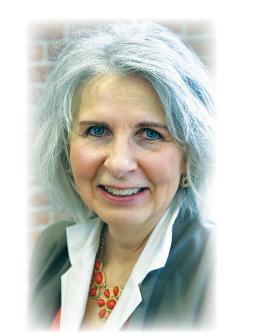
Deborah Dittner is a family nurse practitioner and health consultant. Her mission is to transform as many individuals as possible through nutrition and lifestyle changes. www. debdittner.com

By Barbara Pierce
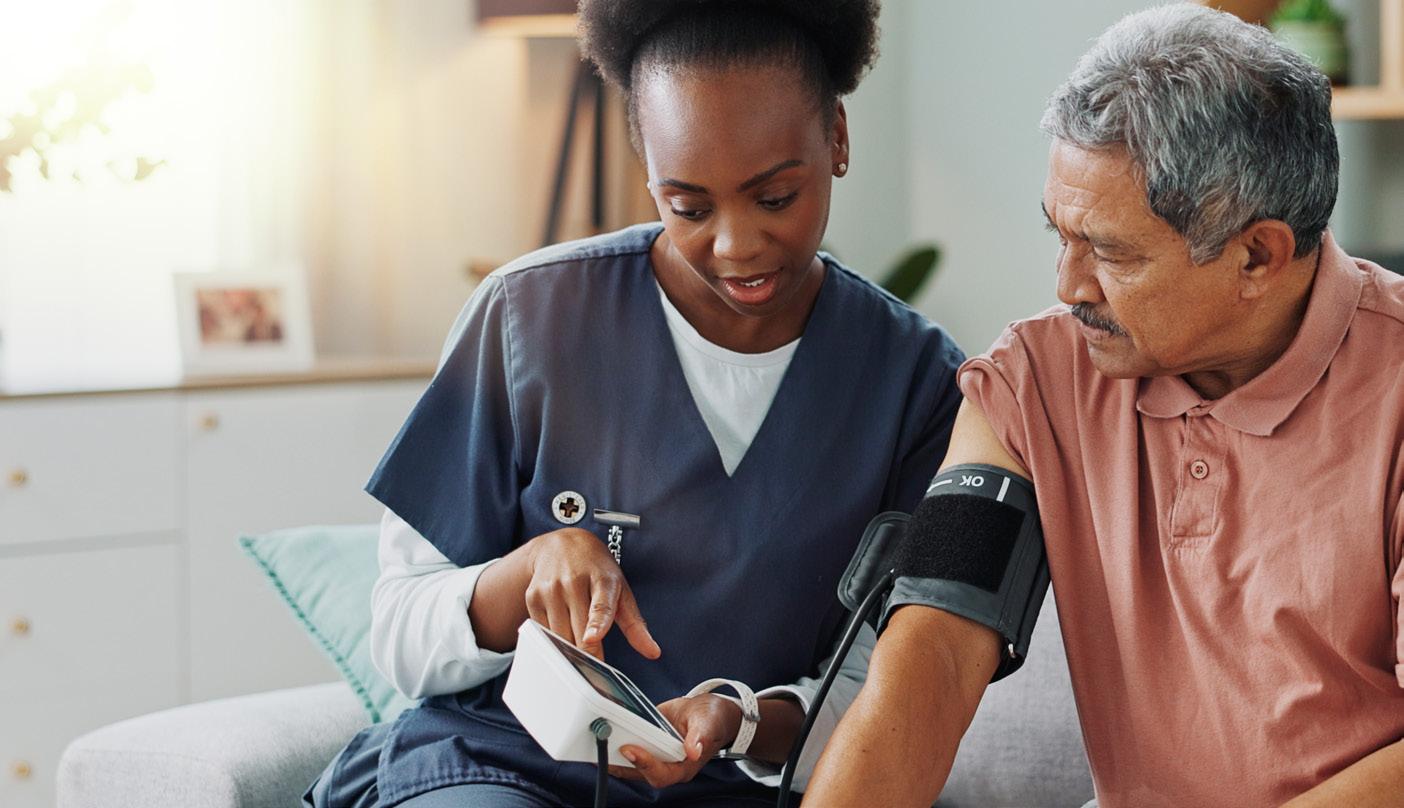

Nearly half of all Americans have high blood pressure according to statistics from the American Heart Association, said physician Cynthia Jones, chief medical officer of Mosaic Health, Utica, and president of the Board of Directors of the American Heart Association of Greater Utica.
Jones shared with us the things we need to know about high blood pressure:
1.What happens if we ignore our high blood pressure?
A: Ignoring high blood pressure puts you at great risk for heart attack, stroke, vision loss, heart failure, kidney disease or kidney failure and sexual dysfunction. High blood pressure is often the first domino in a chain or domino effect leading to devastating consequences.
It causes your heart to work harder. This can block or damage the arteries in the body and cause them to narrow and stiffen. It causes plaque to build up, creating bigger risk for heart attack and stroke. HBP can cause blood vessels in the brain to burst or clog more easily, causing a stroke.
HBP can strain or damage the blood vessels in the eyes, causing vision problems or loss of vision. By damaging the arteries in your kidneys, HBP stops your kidneys from filtering blood the right way which can result in kidney disease.
A low sex drive in women or erectile dysfunction in men is another consequence of HBP.
HPB also reduces blood flow to the brain, creating a risk for neurodegenerative diseases including Alzhei-
mer’s and vascular dementia.
A simple blood pressure check is the first step to preventing this domino effect of consequences.
2.What are the causes of high blood pressure?
A: As you get older, you’re more likely to have high blood pressure. As we age, our blood vessels gradually lose some of their elastic quality. This can cause increased blood pressure. Certain racial groups, like Black, Hispanic and Asian adults, have higher rates of high blood pressure.
There is a significant genetic factor to high blood pressure — a family history of hypertension increases your risk of developing it. Knowing your family history can help you know if you are at risk of high blood pressure, stroke or cardiac incidents. You can’t change genetics, but you can eat a healthy diet and get regular exercise to reduce your risk of high blood pressure.
3.What are the symptoms of high blood pressure? How do we know if we have it?
A: For most people, high blood pressure has no signs or symptoms. That’s why it’s often called “the silent killer.” That’s why it’s crucial to monitor your blood pressure, with your health care provider or on your own.
4.What is a healthy blood pressure reading?
A: A healthy blood pressure

reading is 120/80 or below.
Two numbers are recorded when measuring blood pressure: The top number is the systolic pressure. This is the pressure inside the artery when the heart contracts and pumps blood through the body. The bottom number is the diastolic pressure.
While systolic pressure is responsible for heart attacks or stroke, it’s important to closely monitor your diastolic pressure as well and take action when appropriate.
Call 911 if your blood pressure is higher than 180/120; or if you have chest pains, shortness of breath, change in vision or any of the FAST symptoms: face drooping, arm weakness, slurred speech.
5
What is the best way to reduce my blood pressure if it’s high?
A: For most people, medication is the only way to control blood pressure. Take medication as your healthcare provider prescribes. Blood
pressure is one of the most treatable conditions.
The goal of your healthcare provider will be to get your blood pressure down to the goal with minimal or no side effects. The medication that achieves this for you depends on you, whether your systolic or diastolic readings are high, how much they are high and other medical conditions. This may take some trial and error. Often it takes a combination of medications rather than the highest dose of just one.
Maintaining a normal blood pressure is critical to good health. Since HBP often has no noticeable symptoms, regular checks are the only way to identify and manage the issue.
If you have HBP, you’ll want to monitor it at home, a simple process if you have a blood pressure monitor.
Beginning Feb. 1 through May 31, the American Heart Association is offering the free “Check It! Challenge” program, designed to help participants lower their blood pressure. For information and to register, visit www.heart. org/checkitny.
The American Heart Association, with support from local corporations, makes it possible for many outpatient offices of Bassett Health and Mosaic Health to provide self-monitoring blood pressure cuffs to established patients at risk of high blood pressure. Some public libraries in the Mohawk Valley have self-monitoring blood pressure cuffs available to loan.
By Anne Palumbo
Ahem. Before I enumerate the powerful benefits of eating beans, I’d like to ask you a personal question: Do you suffer from “bean hesitancy,” a common phenomenon marked by a reluctance to eat beans for fear of increased flatulence?
Yes?
Rest easy, you’re not alone. No thanks to jokes, children’s songs, and personal experience, many shy away from this “musical fruit.”
Let’s hope after reading this month’s column, you will—to paraphrase John Lennon—“give beans a chance.” That’s all we are saying.
To begin with a bang: Black beans have a nutritional profile like no other bean. While high in plantbased protein like most beans, black beans contain a unique slew of nutrients that other beans either lack or have negligible amounts.
• Diabetes warrior: According to medical experts, Type 2 diabetes is a national epidemic, with more chil-
dren, teens and young adults developing Type 2 diabetes than in the past due to rising obesity rates and unhealthy diets. Black beans help manage blood sugar levels in three remarkable ways: their low GI (glycemic index) won’t spike blood sugar levels and cause an aggressive insulin response; their high fiber content slows down digestion and the release of glucose into the bloodstream; and, lastly, their particular antioxidants support blood sugar control. Takeaway? Managing this disease can improve life expectancy.
• Sleep promoter: When it comes to better sleep, consuming black beans may be your express ticket to the land of Nod, and, according to the Mayo Clinic, a longer life. Thanks
to an abundance of three important nutrients—tryptophan, magnesium and fiber—your sleep may improve with regular consumption of this soporific bean. Specifically, tryptophan contributes to the production of sleep-boosters serotonin and melatonin, magnesium helps regulate melatonin production and muscle relaxation, and fiber helps prevent disruptive energy crashes by regulating blood sugar levels.
• Heart protector: Eating black beans has been shown to reduce high blood pressure, high cholesterol and obesity, which are all key risk factors for heart disease and premature death. How exactly do beans aid weight loss? Because this mighty legume teems with two nutrients that take longer to digest—protein and fiber—they often enhance feelings of fullness, which can result in eating less. Hearts also love black beans for their bounty of folate, a B vitamin that helps the heart

Drain and rinse canned beans thoroughly (to reduce both sodium and the production of gas). Scour labels and select canned beans with reduced or no sodium. Rest assured that 95% of food cans are now BPA-free.
stay healthy by reducing an amino acid that can damage artery walls and increase the risk of heart disease and stroke.
Circling back to the toots: I now present some valuable intel from the Bean Institute. 1) The more beans you eat on a regular basis, the less likely you’ll experience gas. 2) Drinking more water as you eat more beans helps your body better process a bean’s fiber. 3) Gas in the gut is generally considered a good sign because it indicates that healthy bacteria are hard at work!
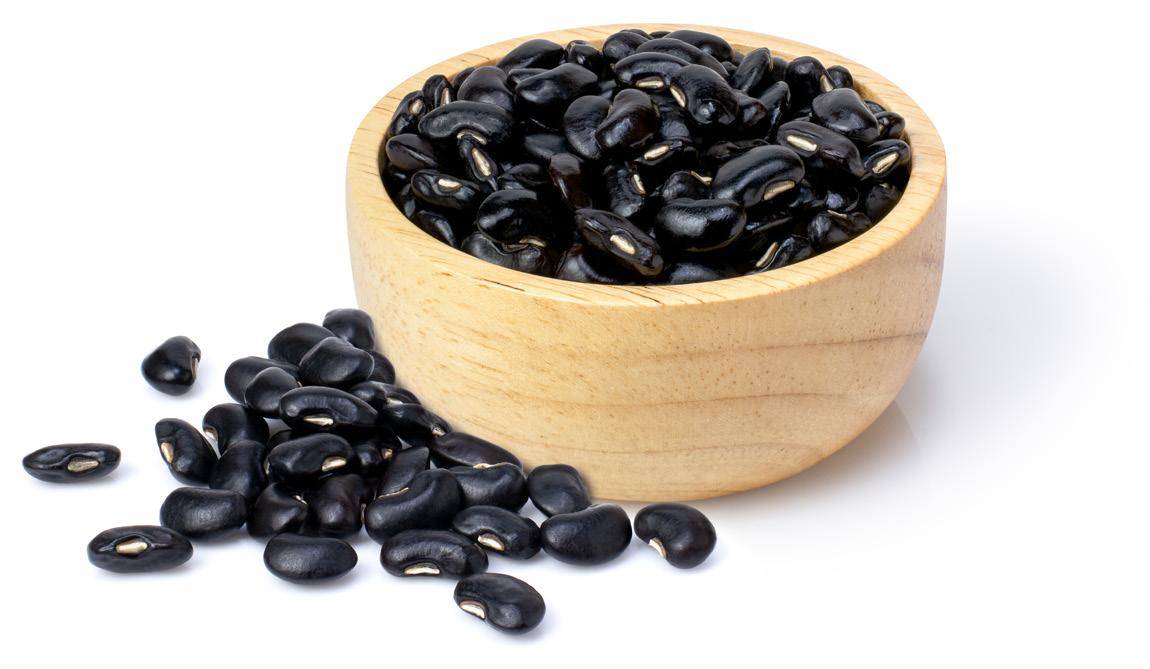

Anne Palumbo is a lifestyle columnist, food guru, and seasoned cook, who has perfected the art of preparing nutritious, calorie-conscious dishes. She is hungry for your questions and comments about SmartBites, so be in touch with Anne at avpalumbo@aol.com.
Ingredients
Serves 6-8 Adapted from Eatingwell.com
1 tablespoon oil
2 medium sweet potatoes, washed
1 medium onion, chopped
1 garlic clove, minced
1 teaspoon chili powder (or more if you like heat)
1 teaspoon ground cumin
½ teaspoon salt (or less)
¼ teaspoon coarse black pepper
Directions
1. Preheat oven to 400 F. Lightly coat a 9 x 13 baking dish with oil or cooking spray.
2. Soften sweet potatoes in microwave: Pierce skin with a fork, then place on a microwave-safe plate and microwave for about 5-6 minutes, until sweet potatoes are soft enough to easily peel and cut into ½ cubes. Transfer to a large bowl.
1 (14.5 oz can) petite diced tomatoes, drained
1 (4 oz can) mild diced green chiles, drained
1 (15 oz can) reduced-salt black beans, drained and rinsed (or 2)
1 (8.5 oz can) sweet corn, drained
1 tablespoon lime juice
1¼ cups shredded cheese of choice
Optional garnish: cilantro, avocado slices, sliced scallions, lime wedges
3. Heat oil in a small nonstick skillet over medium heat. Add chopped onions; cook, stirring occasionally, until soft and golden, 4-6 minutes. Add minced garlic; cook 1 minute more, then add chili powder, cumin, salt and pepper; cook, stirring constantly, for 30 seconds.
4. Transfer contents of skillet to bowl with sweet potatoes; gently stir in diced tomatoes, diced chiles, black beans, corn, lime juice, and ¾ cup cheese. Transfer this mixture to the prepared baking dish. Scatter the remaining ½ cup cheese on top. Cover dish with foil; bake for 15 minutes. Remove the foil; bake until the sweet potatoes are tender and the cheese is melted, about 10 minutes more. (Quickly broil if you like a crispier top.) Garnish with toppings of choice.
Note: Want some crunch? Add a layer of tortilla chips or broken-up taco shells before sprinkling the last ½ cup of cheese.
So why are we so opposed to wearing hearing aids?
By Barbara Pierce
The statistics are alarming. Almost all of us will lose our hearing as we age.
According to a recent study published in JAMA.com (the Journal of the American Medical Association), 65% of people older than 70 have hearing loss; 96% have hearing loss by the age of 90.
These startling findings show that most of us lose our ability to hear as we age.
“I compare hearing loss as we age to expecting that you’ll need glasses to see up close as you get older,” said board-certified hearing instrument specialist Robert Bishton, of Hamilton Hearing in Hamilton. “Hearing loss is common; in fact, it’s the third most common affliction as we age; only exceeded by hypertension and arthritis.”
Some degree of hearing loss is normal as we age, but it’s usually so gradual we don’t notice it. However, we lose a lot of our ability to hear before it becomes something we must deal with. Most of us don’t ignore our vision deficits; we wear the glasses prescribed for us. But most of us ignore our hearing deficits.
According to the National Institutes of Health, among older adults with hearing loss who could benefit
from hearing aids, fewer than one in three use them. Hearing aids are the most common treatment for hearing loss; more than 90% of persons with hearing loss can be successfully treated with hearing aids.
Yet we don’t want to wear them.
Why are we so opposed to wearing hearing aids?
We don’t want to admit we have trouble hearing, say experts. Admitting to hearing loss makes one feel old; there’s a social stigma around this. Others may not realize their hearing is diminishing or just consider it a normal part of aging or can’t afford the cost of hearing aids.
Left untreated, hearing loss can have serious consequences.
“Untreated hearing loss has been linked to cognitive decline and even Alzheimer’s and shouldn’t be ignored. We hear with our brain and hearing aids worn on a daily basis keep the ear-to-brain connection intact,” suggested Bishton.
Research shows that, if you have hearing loss, you have a greater chance of developing dementia. The more hearing loss you have, the more risk you have of developing dementia. Untreated hearing loss is one of the top risk factors for dementia. Our cognitive abilities decline faster when
By Barbara Pierce
Abox of cereal costing $7! Same for a box of cookies? And that’s at Walmart, known for lower prices.
We all experience sticker shock as we shop for groceries. Food costs have cooled down a bit, but we’re still feeling the pinch.
Though prices aren’t going to go down, there are several things you can do to stretch your budget as far as possible.
Some suggestions:
• Plan meals: There are people who can whip up a delicious meal using random items from the fridge like they’re contestants on a reducing-food-waste challenge on TV. Most of us aren’t them. We’re real-life people, who forget about containers of leftovers in the back of the fridge and turn to delivery when we’re tired and uninspired.
The thing is wasting food and using delivery will for sure cause you to spend more money than you’d intended on food. This is where planning and making a list can help. Take inventory of what you have,
we can’t hear well.
Those who wear hearing aids have less of a risk. A study at Johns Hopkins found that hearing aids reduced the rate of cognitive decline in older adults by almost 50%. That’s a significant statistic.
The association between hearing loss and dementia is well-established. It’s crucial to take steps to reduce the risks. How hearing loss is linked to dementia isn’t yet clear and studies point to several possible mechanisms.
“Hearing loss makes the brain work harder, forcing it to strain to hear and fill in the gaps. That comes at the expense of other thinking and memory systems,” said Bishton. “Another possibility is that hearing loss causes the aging brain to shrink more quickly. A third possibility is that hearing loss leads people to be less socially engaged, which is hugely important to remaining intellectually
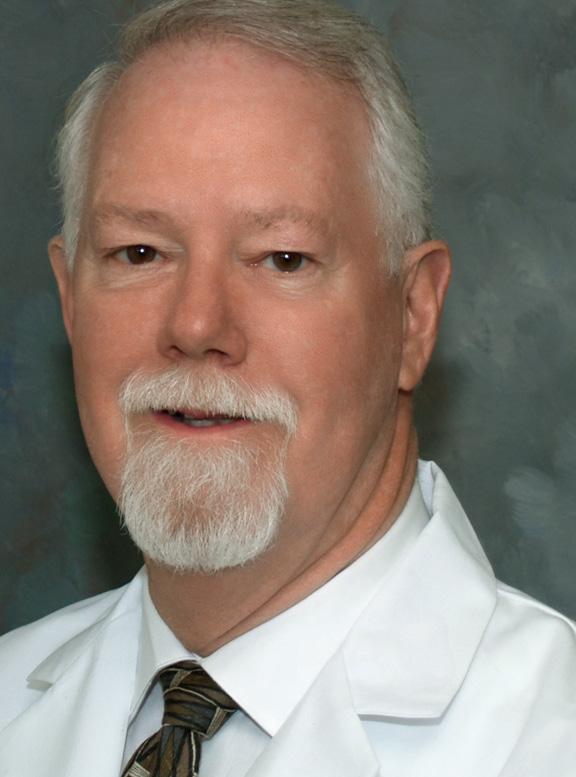
stimulated. If you can’t hear very well, you may not go out as much, so the brain is less engaged and active.” Without question, the most challenging aspect of hearing loss is the effect it has on our relationships. Hearing loss makes it more difficult to interact with people. When people have a hard time hearing what others are saying, they often start to avoid situations where they know they will experience difficulty hearing. Similarly, loved ones may find communicating with a person with a hearing loss too difficult and avoid speaking with them.
This can lead to social isolation, which can lead to depression. The combination of isolation and depression is also a risk for dementia. Frequently, a person with a hearing loss may be mistaken for one with dementia.
According to a study, hearing loss was significantly associated with an increased risk of depression in adults of all ages. Untreated hearing loss, social isolation and depression all contribute to an overall poorer quality of life.
Hearing loss also causes falls. Even a mild degree of hearing loss triples the risk of an accidental fall. In the ear, balance and hearing are directly connected, sharing a common nerve pathway to the brain.
“While there’s nothing you can do to prevent a hearing loss from progressing, the earlier you make the decision to treat your hearing loss with hearing aids, the better the longterm outcome will be,” said Bishton. Experts recommend that everyone have their hearing tested once a year, to identify issues early on and treat them.
“Hearing aids today are fantastic and many insurance plans today have some coverage. If you have hearing loss, get it diagnosed and treated and live life to the fullest,” he advised.
come up with some meal ideas and build a grocery list from that to be as efficient as possible with your food budget.
• Make a list: Planning what you’re going to shop for helps you get organized and stay on budget. A list prevents overbuying and impulse buying. It can be useful to organize your list by categories, such as musthaves and nice-to-haves and these can be cross-referenced with sections of the store.
• Avoid impulse purchases: Stick to your list and avoid impulse purchases. Impulse purchases in general can be a drain on your budget. To avoid them, consider having a strict “stick to the list” rule.
• Plan your list around what’s on sale: This is important. Planning your meals and grocery list around what’s on sale is an effective way to keep your grocery costs down. As you make your list, go online to find the sale items for the store you shop at.
It’s worth watching for deep discounts on staples, too — so long as they won’t spoil! If your favorite brand of toilet paper, cereal or frozen
fruit is on sale, it can be a good time to stock up. Just be sure it’s something you’ll actually use, rather than something you’re buying just because it seems like a deal.
• Choose store brand items: You might assume that a store-brand of any given food is a poorer-quality imitation of its name-brand cousin. But supermarkets these days are working to change that perception. Often the quality of store brands is the same as — or even better than — that of name brands.
For example, for Salonpas Lidocaine Pain Patches, a package of six cost $10.31. A package of six of Equate, the Walmart brand, is $7.12. Both contain the exact same ingredients.
Choosing store brands can add up to big savings, so it’s worth experimenting to see if they work for you.
• Use coupons: Coupons can help you save a lot. Start by downloading the apps for the stores you shop at and check them for coupons each week when you’re creating your list. Consider joining rewards and loyalty programs for access to more deals.
Local newspapers, especially the Sunday editions, often have coupons. Grocery stores send out advertisements with coupons in the mail. Some stores have printed coupons at the entrances. Some stores offer special discounts to loyalty program members. For others, the store’s app will let you clip the coupons virtually
and add them to your account. You browse coupons and click on the ones you want. Then they’re automatically applied to your order at checkout.
• Buy in bulk: Products in larger-size packaging often have a lower cost per ounce than those in smaller packages. For instance, you might save overall by buying bigger boxes of cereal or tubs of mayo. This isn’t always true, though, so check the tags in your store to see if they break down the cost for you.
• Shop at discount stores: This can be a good way to reduce your grocery bill. For example, Bargain Grocery in Utica, with produce at its core, offers merchandise at lower prices. Price Chopper and Aldi are known for affordable prices.
Food Sense offers food packages at a large discount. “It’s a ministry of our church — Unadilla Forks Baptist Church, Leonardsville,” explained Sheri Feldman, co-manager. “We’re all volunteers, under the auspices of Food Bank of CNY. Anyone is eligible. We take cash only.” Basic monthly package offers about $40 worth of food for $20.50. See Food Sense on Facebook for details.
Being cost-conscious while grocery shopping takes some planning and organizing. But the benefits can be huge. By sticking to your grocery budget, you’re saving more money for other things that matter to you.

Age, family genetics and gender make it nearly impossible for older adults to avoid becoming a chronic disease statistic.
According to NCOA research, 94.9% of adults aged 60 and older have at least one condition, while 78.7% have two or more.
You probably have a parent or grandparent who is managing a condition right now or perhaps you are managing one yourself.
And obesity, which impacts about 42% of adults 60 and older, can increase your risk for conditions like heart disease, Type 2 diabetes, and some cancers.
With these kinds of odds, you might wonder if there is anything you can do to prevent the onset of a chronic medical condition or make managing an existing one easier. The answer is yes.
Here are 10 common chronic conditions adults 65-plus on Medicare were treated for in 2018, and what you should know about each.
Nearly 12% of older adults on Medicare were treated for Alzheimer’s disease or another form of dementia. Alzheimer’s disease is one specific type of dementia — a condition that causes memory loss and difficulty thinking or problem-solving to the point that it interferes with every day activities. Dementia is not a normal part of aging and is caused by changes in the brain over time.
The biggest risk factors for these chronic conditions are things you often can't control, including age, family history and genetics. But studies have suggested incorporating the following habits into your lifestyle could slow or prevent onset:
• Exercise. Staying active isn't just good for your heart; it's also great for your brain.
• Sleep. Your brain does important stuff while you are sleeping, so getting at least seven hours of deep sleep a night is crucial. Upgrading to the best mattress for you could help.
• Be smart about your diet. Research suggests that some foods can negatively affect your brain.
Sixteen percent of older adults sought treatment for depression — a treatable medical condition that is not a normal part of aging. Depression causes persistent feelings of sadness, pessimism, hopelessness, fatigue, difficulty making decisions, changes in appetite, a loss of interest in activities and more.
Steps you can take to help with depression include:
• Manage stress levels. Reach out to family and friends during rough spells and consider regular meditation.
• Eat a healthy diet. What you put into your body can affect your mood, so focus on foods that are high in nutrients and promote the release of endorphins and those "feel good" chemicals, and limit consumption of things like alcohol, caffeine, artificial sweeteners, and highly processed foods.
• Routine exercise. Exercise has a number of physical and psychological benefits, including improving your mood through the release of endorphins and other feel-good brain chemicals, boosting self-confidence and self-worth through meeting goals and improving your physical appearance, and increased socialization through interactions at gyms and group classes.
• Talk to your doctor. If you've
experienced any of the warning signs of depression, talk to your doctor and ask about your treatment options. Antidepressant medications or psychotherapy could be right for you.
If you’re in severe emotional distress, one of the first things you should do is tell someone else about it — such as a trusted friend or family member. You can also dial or text 988 from your phone to speak with a counselor who is specially trained in suicide prevention. The 988 service is free, confidential, and available to everyone in the United States 24 hours a day, seven days a week.
About 5% of older adults were treated for heart failure — a condition that occurs when the heart cannot adequately supply blood and oxygen to all of the organs in the body. The heart might become enlarged, develop more muscle mass or pump faster in order to meet the body’s needs, causing you to feel tired, light headed, nauseous, confused, or lack an appetite.
Steps you can take to prevent or diminish symptoms of heart failure:
• The best prevention is to follow a doctor's recommendations to decrease your risk for coronary heart disease and high blood pressure.
Nearly 25% of older adults were treated for chronic kidney disease (CKD) or a slow loss in kidney function over time. People dealing with CKD have an increased risk for developing heart disease or kidney failure.
Steps you can take to prevent or diminish symptoms of CKD:
• Understand what damages your
Nearly 95% of adults 60 and older have at least one chronic condition, while nearly 80% have two or more.
kidney. Diabetes and high blood pressure are the greatest risk factors for kidney damage, so taking steps to prevent these diseases is your best strategy.
• Early detection and treatment. Talk to your doctor regularly, stay current on screenings, and keep up on prescriptions you need to diminish symptoms.
Twenty-seven percent of older adults were treated for diabetes — a disease that occurs when your body is resistant to (or doesn’t produce enough) insulin. Insulin is what your body uses to get energy from food and distributes it to your cells. When this doesn’t happen, you get high blood sugar, which can lead to complications such as kidney disease, heart disease, or blindness. Chances of having diabetes increases after age 45.
Steps you can take to keep you from developing diabetes or to manage this condition:
• Eating a healthy diet, including monitoring your carbohydrate and calorie intake, and talking to your doctor about alcohol consumption.
• Exercising for 30 minutes five times a week to keep your blood glucose levels in check, and to control weight gain.
• Safely losing 5-7% of body weight if you are diagnosed with pre-diabetes.
Nearly 29% of older adults were treated for ischemic heart disease — a condition that is caused by a build-up of plaque that narrows the arteries leading to the heart. Narrow

or blocked arteries decreases the amount of oxygen-rich blood delivered to the heart. This can cause other complications like blood clots, angina or a heart attack.
Steps you can incorporate to help if you have ischemic heart disease:
• Avoid saturated and trans fats, and limit sugar and salt intake
• Get seven to eight hours of sleep each night
• Keep your stress levels in check
• Do regular cardio exercises
• Abstain from smoking
• Talk to your doctor about the major risk factors, including high cholesterol and high blood pressure
About 35% of older adults were treated for arthritis — an inflammation of your joints, which causes pain and stiffness and is more common in women.
Steps you can take to delay the onset of arthritis or manage the symptoms:
• Exercise at least five times per week, for 30 minutes each time, to improve function and decrease pain. Try to include a mixture of aerobic, strength-building, and stretching movements.
• Stay within the recommended weight for your height — losing one pound can remove four pounds of pressure on your knees.
• Make sure your back, legs and arms are always supported.
• Take precautions to avoid joint injuries.
• Do not smoke.
About 40% of adults 65 and older are living with obesity, a chronic disease linked to more than 200 chronic conditions. The National Council on Aging (NOAA) is pressing to define quality obesity care as a universal right. That includes the right to coverage for treatment with access to the full range of treatment options.
Tips for addressing obesity include:
• Understanding what obesity treatments are covered by Medicare
• Empowering yourself with knowledge about nutrition
• Educating others and being your own advocate
More than 50% of older adults were treated for high cholesterol — a condition that occurs when your body has an excess of bad fats (or lipids), resulting in your arteries getting clogged, which can lead to heart disease.
Steps you can take to prevent or manage high cholesterol:
• Abstain from smoking and
Another common chronic conditions for adults over 65 is chronic obstructive pulmonary disease (COPD), which includes two main conditions: emphysema and chronic bronchitis. COPD makes it hard to breathe and causes shortness of breath, coughing, and chest tightness.
Steps you can take to manage COPD include:
• The best way to prevent COPD — or slow its progression — is to quit or avoid smoking. Also try to avoid secondhand smoke, chemical fumes and dust, which can irritate your lungs.
• If you already have COPD, complete the treatments that your doctor has prescribed, get the flu and pneumonia vaccines as recommended by your doctor, and continue to remain active.
This article was published in May 2024 on the website of the National Council on Aging (NOAA), www.ncoa.org.
or call Yellow
excessive alcohol consumption
• Be active each day
• Manage your weight
• Minimize saturated fats and trans fats in your diet
Nearly 60% of older adults were treated for hypertension — a common condition that involves both how much blood your heart pumps, as well as how resistant your arteries are to the blood flow. When your heart pumps a lot of blood, and you have narrow arteries which resist the flow, that’s when you get high blood pressure, also known as hypertension. The danger of hypertension is not only that you can have it for years and not know it, but it can cause other serious health conditions, like stroke and heart attacks.
Steps you can take to prevent or reduce high blood pressure:
• Maintain a healthy weight. Losing just 10 pounds can reduce blood pressure
• Regulate your stress levels
• Limit salt and alcohol consumption
• Exercise daily, including a combination of moderate to vigorous-intensity aerobic activities, flexibility and stretching, and muscle strengthening
• Check your blood pressure regularly—the quicker you catch pre-hypertension, the more likely you are to prevent high blood pressure








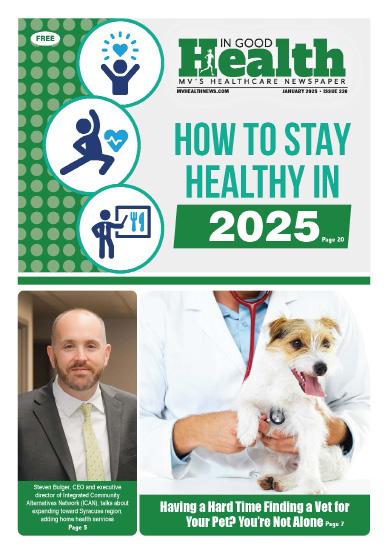
By Deborah Jeanne Sergeant
Born between 1946 and 1964, the oldest members of the baby boomer generation will turn 80 in 2026.
Does the CNY area have sufficient resources available to meet their needs in older age?
Geriatrician Sharon Brangman, on the faculty at SUNY Upstate Medical University and a distinguished service professor, discussed what is available in CNY and what is still lacking.
“The biggest issue is transportation,” said Brangman, who is also chairwoman of geriatric medicine and director of the Upstate Center of Excellence for Alzheimer’s Disease. “We’re still a community where the single private car is the main source of transportation. It’s important for getting to doctor appointments, pharmacies and socializing. We don’t have that infrastructure support for public transportation.”
Poor vision, slower reflexes and limited range of motion mean giving up the keys. However, older adults still need to get to doctor’s appointments, social engagements and the grocery store. Riding a bus can make













running an errand take all day, as riders must wait for others to board and get off the bus at each stop. Bus and taxi services typically do not offer any help with packages or stepping on and off the bus. And bus routes do not go to every location a person may want to go.
Ride share services can help provide transportation. However, “most older adults don’t have a smart phone, so they don’t use ride share apps,” Brangman said. “Some will have their adult children order it for them, but they feel like a burden because they’re bothering their kids.”
Some older adults continue to drive even if they are no longer safe driving because they have no other convenient means of transportation — not a good option, considering their higher rate of death and injury should they be involved in a car crash. According to the Centers for Disease Control and Prevention, drivers aged 70 and older have a higher crash death rate than those aged 35 to 54.
Services like GoGoGrandparent.com function like a concierge, helping people link with ride sharing
When your child turns 18 years old, they legally become an adult. This is an important time to consider their financial future, especially if they need additional care into adulthood. Here are five things that may help you prepare for this milestone:
1. Health and Welfare Decision-making
When your child legally becomes an adult, you can no longer make certain decisions for them about their health and welfare. However, you can stay involved through our representative payee program. Social Security will determine who best serves as a representative payee for your child’s benefits. To learn more about the representative payee program, read our webpage at www.ssa.gov/
payee/index.htm. Please note Social Security does not recognize power of attorney.
2. Changes in Supplemental Security Income (SSI) Eligibility
SSI provides monthly payments to adults and children with disabilities, as well as people 65 and older, who have little or no income and resources.
If your child receives SSI, when they turn 18 we will review their eligibility for continued SSI payments based on the disability rules for adults. For more information, please review the publication, “What You Need To Know About Your Supplemental Security Income (SSI) When You Turn 18” at www.ssa.gov/pubs/ EN-05-11005.pdf. Please be sure to













and food delivery. A live operator takes the call and summons help for a convenience fee, plus the cost of the service.

As people age, they tend to rely upon healthcare resources more than they did when they were younger. Considering the healthcare worker shortage exacerbated by the pandemic — when 20% of healthcare workers quit the industry — the incoming flux of older adults needing more healthcare resources may overwhelm the system.
Another way in which technology can help is telehealth, which can reduce staffing woes for healthcare providers. Telehealth is one example of ways that the healthcare system can reduce urgent care and emergency department visits. Many providers are turning to automated systems to facilitate visit reminders and prompt prescription filling. Although some older people resist using technology for telehealth, as younger Boomers age, this won’t be as big of a problem. People who retired 30 to 40 years ago were likely using technology in their day-to-day work lives.
review this with your child. We also encourage you to check out Social Security’s youth toolkit webpage at www.ssa.gov/youth.
3. Education Transitions
If your child attends school, they have a few options to continue their education, such as pursuing:
• A diploma: They may pursue further education in college or trade programs with an individualized education program (IEP). More information on the IEP is available at www.ssa.gov/pubs/EN-64-118.pdf.
• A certificate: They may have the opportunity to continue in a transitional program in their high school even after they complete their senior year. Most are permitted to remain until they turn 22.
• Employment: Local vocational rehabilitation services can assist with employment options during pre-graduation IEP meetings.
Once your child turns 18, they may choose or qualify for different living arrangements depending on the services they already receive. If your child receives therapy services at school, how will they receive them once they leave? They could receive them through a Medicaid waiver or private insurance.
Qualification for respite services may also look different. Respite services allow family caregivers time to step away from their duties. It is essential you understand all the benefits and options available to your child after they complete high




































Living in an assisted living community helps with transportation and with other types of assistance. However, not everyone wants to live in or can afford assisted living.
Aging in place at home appeals to most older adults. However, Brangman said it’s “not always feasible because of repairs that are needed and there are so few home health aides. A study showed that one of the main reasons that older adults can stay in their home is a good handyman to help when things break.”
It can also help to prepare for older age. For example, “automating” tasks such hiring a lawn care and snow removal company can prevent injury from these activities. Scheduling regular delivery of groceries and supplies can make shopping simpler. Signing up for automatic payments ensures these bills won’t be skipped.
“Get services that augment support for people to stay in their own homes, like service jobs, homecare, handyman services and food delivery,” Brangman said.
school and before deciding on living arrangements and services.
5. Financial Protections
• Special needs trust: Update estate planning documents before your child turns 18. Otherwise, inheritance may terminate your child’s governmental benefits.
• ABLE account: You can deposit funds into this account up to a certain limit each year. However, there are limits on what its funding covers. More information on ABLE accounts is available at www.ssa.gov/payee/ able_accounts.htm.
The above is informational only and does not constitute financial advice or an endorsement of ABLE products or ABLE organizations by the Social Security Administration. There may be other financial options that could be a better fit for some individuals. You must use your best judgement to determine which option is best for your situation.
Children receiving benefits on a parent’s record may continue to receive those benefits until age 19 if they’re a full-time elementary or secondary school student. People who have a disability that began before age 22 may also be eligible to receive child’s benefits at any age. For more information, please review the publication, “Benefits for Children” at www.ssa.gov/pubs/EN-05-10085. pdf. As your child enters adulthood, consider these issues while you navigate their financial future.
Please share this information with your friends and loved ones who may need it.
By Jim Miller
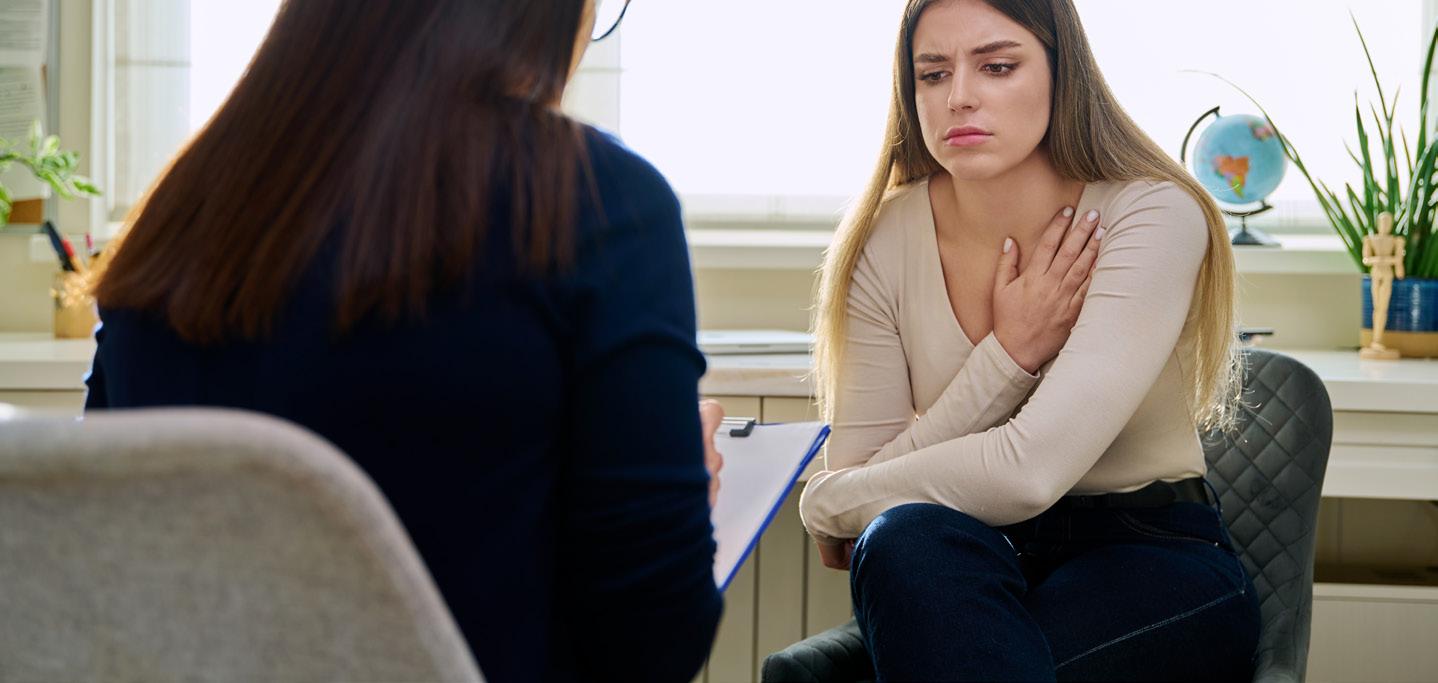
Dear Savvy Senior,
What types of mental health services does Medicare cover? I struggle with anxiety and depression, and my primary care provider recommended I see a therapist or psychiatrist.
Anxious Annie
Dear Annie,
Medicare actually covers both outpatient and inpatient mental health care services and programs to help beneficiaries with anxiety, depression and many other mental health needs. Here what you should know.
ment through a variety of health professionals such as psychiatrists, psychologists, clinical nurse specialists, clinical social workers, nurse practitioners, physician assistants, marriage and family therapists and mental health counselors.
To get this coverage, you’ll need to choose a participating provider that accepts Medicare assignment, which means they accept Medicare’s approved amount as full payment for a service.
If you choose a nonparticipating provider who accepts Medicare but does not agree to Medicare’s payment rate, you may have to pay more. And if you choose an opt-out provider that does not accept Medicare payments at all, you will be responsible for the entire cost.
care at a general hospital.
In addition to the outpatient and inpatient mental health services, Medicare also covers yearly depression screenings that must be done in a primary care doctor’s office or clinic. Annual depression screenings are covered 100 percent.
And if you have a Medicare prescription drug plan, most medications used to treat mental health conditions are covered too.
If you get your Medicare benefits through a private Medicare Advantage plan, they too provide the same coverage as original Medicare does, but may impose different rules and will likely require you to see an in-network provider. You’ll need to contact your plan directly for details.
If you’re enrolled in original Medicare, your Part B coverage will pay 80% (after you’ve met your annual $257 Part B deductible) for a variety of counseling and mental health care services that are provided outside a hospital, such as in a doctor or therapist’s office, hospital outpatient department or community health center. These services can also be received via telehealth.
To locate a mental health care professional in your area that accepts Medicare, go to “Medicare.gov/ care-compare,” click on “doctors & clinicians” and type in your location, followed by “clinical psychologist” or “psychiatry” in the “Name & Keyword” box. You can also get this information by calling Medicare at 800-633-4227.
For more information, call Medicare at 800-633-4227 and request a copy of publication #10184 “Medicare & Your Mental Health Benefits,” or you can read it online at Medicare. gov.
9.75” WIDE X 6.69” HIGH
You or your Medicare supplemental (Medigap) policy is responsible for the remaining 20% coinsurance.
Medicare also gives you the expanded option of getting treat-
If you happen to need mental health services in either a general or psychiatric hospital, original Medicare Part A covers this too, after you’ve met your $1,676 Part A deductible. Your doctor should determine which hospital setting you need. If you receive care in a psychiatric hospital, Medicare covers up to 190 days of inpatient care for your lifetime. And if you use your lifetime days but need additional care, Medicare may cover additional inpatient
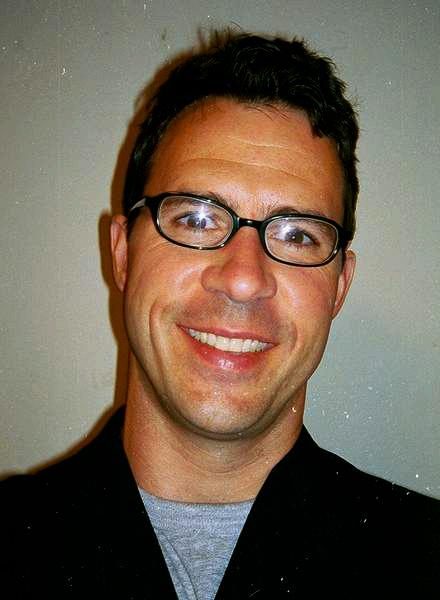

At Hematology-Oncology Associates of CNY, you are never just a diagnosis or a number. We see you...the whole person, with passions, hopes, dreams, histories, and loved ones who share in your journey. From diagnosis, to treatment, to survivorship – our personalized care focuses on truly understanding and planning for your unique needs. We provide genuinely compassionate support, collaborating with you, your family, and caregivers every step of the way. Learn more about HOA today. We’ll see you and care for you – body, mind and spirit.

hoacny.com

Basking in a sauna can be a nice way to relieve stress or relax muscles following a workout.
But soaking too long can increase a person's risk of heat stroke, particularly if they aren't well-hydrated, doctors warn.
Most cases of heat stroke occur on hot days, due to overexertion, researchers say.
However, “sauna use is a rare but potentially important cause of classical heat stroke,” physician William Jack McIver with Birmingham Heartlands Hospital in the UK wrote in a study published Jan. 7 in the journal BMJ Case Reports.
The new paper cited 10 cases of heat stroke caused by too much time in a sauna, including three that resulted in death.
The most recent case involved a woman in her early 70s who'd been found unconscious in her local gym's sauna, where she had been doing stretching exercises for about 45 minutes.
Her core body temperature registered more than 107 degrees F. by the time paramedics arrived. Her blood pressure was extremely low, and her heart rate was extremely high.
“My experience has emphasized the dangers of saunas and how important it is to be fully hydrated on entering a sauna and for them to be regularly checked by staff,” said the woman, as quoted in the study. “As a regular sauna user I never suffered any issues and, on reflection, I believe I had not drunk enough water.”
“I am pleased to say I'm feeling well and appear to have made a full recovery,” she added.
The woman was lucky, McIver says.
“Classical heat stroke in elderly people carries a mortality rate of more than 50%, and this increases further with each additional organ dysfunction,” McIver wrote in his report.
Getting a person's temperature back to normal is vital to ensuring their survival, he further explained.
“Once heat stroke has occurred, the key determinate of outcome is how rapidly a patient is cooled, as the time spent with elevated core body temperature is correlated to the degree of cellular damage,” McIver concluded.
Julie Hall has joined Mohawk

Julie
Hall
Valley Health System (MVHS) as senior vice president and chief nursing officer.
Prior to joining MVHS, Hall was chief nursing officer and vice president, patient services, at Bassett Medical Center in Cooperstown, where she led improvements in nursing quality care outcomes, patient experience, employee engagement, increased retention and fortified community partnerships.
Hall earned her Bachelor of Science in nursing at State University of New York at Delhi and her Master of Science in nursing leadership at Capella University, in Minneapolis. She is currently working on her Doctor of Nursing Practice degree through Case Western Reserve University, based in Cleveland.
In this new role, Hall will be responsible for the development, implementation and delivery of nursing care, treatment and services for the entire MVHS organization. Together with MVHS leadership, Hall will focus on furthering a patient-first, team-oriented culture working in conjunction with all other medical, clinical and therapeutic disciplines to ensure optimal service and superior outcomes.
Mohawk Valley Health System (MVHS) announced the hiring of three physicians and one physician assistant. They are:
• Physician James Cesare joined
the Mohawk Valley Health System (MVHS) Breast Care Center. Prior to joining MVHS, Cesare was a physician and director of the Breast Care Center at Slocum Dickson Medical Group for nearly 20 years.
Cesare earned his medical degree at Boston University. He completed his internship and residency at St. Francis Hospital and Medical Center in Hartford, Connecticut. Cesare is certified by the American Board of Surgery and is a fellow with the American College of Surgeons.
• Physician Angelina Nitto joined MVHS at the Sister Rose Vincent Family Medicine Center and is a faculty member for the St. Elizabeth Family Medicine residency program.
Nitto earned her medical degree from St. George’s University School of Medicine in True Blue, Grenada, and completed her residency at St. Elizabeth Family Medicine Residency Program in Utica. Nitto is board-certified in family medicine.
• Physician Sampath Subramaniam joined MVHS as a surgeon at the MVHS Surgical Group.
Subramaniam earned his Bachelor of Medicine, Bachelor of Surgery degree from Madras Medical College in Chennai, India. He completed his internship at Rajiv Gandhi Government General Hospital in Chennai, India, and his surgical residency at Bronx-Lebanon Hospital Center in the Bronx. Subramaniam also completed a fellowship in minimally invasive and bariatric surgery at Sinai Hospital in Baltimore. Subramaniam is board-certified by the American Board of Surgery.
• Saraya Bakhsh joined MVHS as a physician assistant at the MVHS Waterville Medical Office.
Bakhsh earned her Bachelor of Science in kinesiology at the University of Minnesota Twin Cities in Minneapolis and her Master of Science in physician assistant studies at Le Moyne College in Syracuse.
Bakhsh is a member of the New York State Society of Physician Assistants and American Academy of Physician Assistants.
The Edwin J. Wadas Foundation is accepting applications for the $250,000.00 Game Changer Grant.
This is a competitive grant to address obstacles preventing youth from accessing recreational and competitive youth sports.
Qualified applicants include school districts, nonprofit organizations and municipalities located in Oneida and Herkimer counties.
All projects should be transformative, sustainable and address an issue preventing children aged 5-18 from accessing sports, athletics
Rome Health recently welcomed
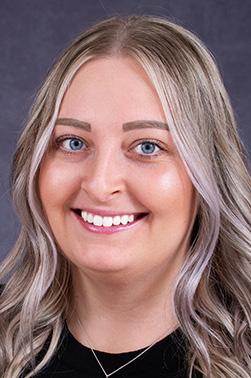
Hayley Crist family nurse practitioner Hayley Crist to its Camden Health Center located at 5 Masonic Ave. in Camden.
Crist has lived in Central New York for most of her life, growing up just outside of Cooperstown.
After graduating high school, Crist went on to receive her Bachelor of Science in nursing from Hartwick College and then a Master of Science in nursing, family nurse practitioner from Utica University.
Crist has always had an interest in providing care for other people. She recalls how her grandmother was a nurse and by following her footsteps, she has found her way into a fulfilling career.
“I’ve always wanted to go into the medical field even since I was a little girl. My grandmother was a nurse so I’m proud to be following in her footsteps.” Crist explained; “I really enjoy that I am able to meet new people and help them in a time of need, whether they may not be feeling well, or they have a concern that they need addressed; I love that I can help them in some way to feel more comfortable at a time when they are not feeling well or they feel alone.”
Previously Crist worked at several area hospitals like St. Elizabeth’s Medical Center and the Wynn Hospital. She was also a travel nurse at AYA Healthcare where she spent time in hospitals throughout New York state.
or recreational play in their local community. Priority will be given to those projects showing collaborative efforts to enhance an existing program.
“The Game Changer Grant provides significant funding to transform your community and provide children access to sports and fitness. There are numerous physical, mental and social skills that can be taught through participation in youth sports. We encourage organizations to collaborate and be creative when addressing obstacles facing their community” stated Victoria Cataldo,
executive director of the Edwin J. Wadas Foundation.
In 2023, multiple awards totaling over $700,000 were given out as part of the Game Changer Grant Competition. The winning award of the $250,000.00 was Westmoreland Little League.
“Receiving the Game Changer Grant gave our organization the ability to take an already growing program to the next level. Through the grant, our organization was able to utilize a parcel of land that was already a historical part of the town and fix a big problem we have faced in recent years—field space for our young athletes. As a small organization it gave us the opportunity of a lifetime to create a space that will benefit youth in our community for years to come,” said the Westmoreland Little League board of directors. Applications are being accepted until May 1. For more details and to apply visit gamechangergrant.com.

xcellus BlueCross BlueShield recently announced the recipients of its Health Equity Innovation Awards, designed to support community programs and services that focus on combating racial and ethnic health disparities across Upstate New York, including two in the Utica-North Country region.
Last year, Excellus BCBS called on organizations to apply for grants that would fund initiatives, programs and research that confront the fundamental causes of health inequities, with an emphasis on the impact of structural racism. The health plan hopes the awards will help to enhance the physical and mental health of our communities, reduce social disparities in healthcare and promote equitable access to health services.
The funding, which totals more than $500,000, will benefit 19 nonprofit 501(c)(3) organizations in the Rochester, Central New York-Southern Tier, and Utica-North Country regions. Recipients were chosen from an application pool of nearly 300 sub-
objectives and quantifiable results aimed at diminishing health disparities and advancing health equity.
Funding from the Excellus BCBS Health Equity Innovation Awards will support the following initiatives in the Utica-North Country region:
• MV Resource Center for Refugees: Program will address the need to support behavioral mental health by providing access to a behavioral health navigator, offering free education and services to the local refugee population in the city of Utica.
• Planned Parenthood of the North Country: Program will address the need for preventive healthcare for a high-risk, underserved population in a rural area by expanding services using innovative technology to connect patients with primary care services through outreach centers.
For the latest information on Excellus BlueCross BlueShield’s ’s community investments and partnerships, visit, ExcellusBCBS.com/ community.
And routine preventive care is a great place to
For Excellus BlueCross BlueShield members, your plan provides FREE coverage for recommended preventive care when you use in-network doctors and providers.

To learn more visit ExcellusBCBS.com/PreventiveCare or scan the QR code to download a preventive health checklist.
“Our study results forecast a dramatic rise in the burden from dementia in the United States over the coming decades, with one in two Americans expected to experience cognitive difficulties after age 55,” said senior investigator and physician Josef Coresh, founding director of the Optimal Aging Institute at NYU Langone Health.
That dementia risk translates into an estimated half-million cases this year — and will increase to 1 million new cases annually by 2060, researchers stated.
This increase is directly tied to the aging of the U.S. population, along with a better understanding of other factors related to dementia — genetics, high blood pressure, diabetes, obesity, unhealthy diet, lack of exercise and poor mental health.
For the study, researchers examined data from an ongoing study that has tracked heart health and brain function among nearly 16,000 participants as they age.
Between 1987 and 2020, more than 3,200 participants were diagnosed with dementia, researchers said.
Results also showed a higher risk among Black people, as well as in those who carry a mutation of the APOE4 gene that’s been previously linked to Alzheimer’s disease risk.
The APOE4 mutation is considered the single biggest genetic risk factor for developing late-onset Alzheimer’s, researchers noted.
These findings place added emphasis on the need for policies aimed at preventing dementia.
“The pending population boom in dementia cases poses significant challenges for health policymakers, in particular, who must refocus their efforts on strategies to minimize the severity of dementia cases, as well as plans to provide more health care services for those with dementia,” Coresh said.
For example, previous studies have shown that preventing heart disease and diabetes should also slow brain decline.
Loss of hearing among seniors has also been linked to an increased risk of dementia, researchers added. However, only a third of Americans with hearing loss use hearing aids.


We’ve all heard old-fashioned health cures or superstitions, passed down to us from our grandmothers or our mothers. Statements like, “An apple a day keeps the doctor away.” “You’ll get sick if you go outside with wet hair.” “Don’t sit so close to the TV; it’ll ruin your eyes.”
There’s no rhyme or reason why these universally accepted principles made their way into our lives. But the question remains: are they actually true? Is there any merit to these things we’ve learned?
To shed some light on these old health myths:
1. You’ll get sick if you go outside in cold weather with wet hair
No, going outside with wet hair doesn’t make you sick. Colds and other illnesses are caused by viruses, which are spread through bodily fluids like coughs, sneezes and blowouts. You can’t catch a cold from wet hair.
To be fair, we tend to get sick in the colder months, but it has nothing to do with the actual temperature or wet hair. Viruses thrive in cold weather. And since we spend more time indoors with people during the winter, we’re more likely to spread infection.
2. Chicken soup is a cure-all for colds and the flu
For centuries, chicken soup has been a popular home remedy for a cold or the flu. Eating chicken soup

By Barbara Pierce
while you’re sick won’t do you any harm, but it won’t cure what’s wrong with you.
However, chicken soup, while definitely not a cure, definitely brings warmth and comfort — as well as protein and nutrients — when you’re feeling under the weather. Drinking warm liquids, such as soup, may give you relief from your symptoms. It’s hydrating and liquids help when we’re sick.
3. Take vitamin C to get rid of a cold
Popular belief is that vitamin C can cure the common cold. While vitamin C can support the immune system and may help reduce the severity and duration of colds, there is no scientific evidence to suggest that it can cure a cold. Colds are caused by viruses and the body typically takes several days to recover, regardless of vitamin C intake.

4. Feed a cold, starve a fever
This is an old saying that is considered a myth. According to medical experts, you shouldn’t starve a fever and should eat a healthy diet when you have a cold or a fever, as your body needs proper nutrition to fight off illness. The most important thing is to stay hydrated with fluids regardless of whether you have a cold or a fever.
5. An apple a day keeps the doctor away
A study found that there’s no significant difference in doctor’s visits between people who ate an apple a day and those who didn’t. But it’s not all bad news — daily apple eaters did appear to use fewer prescription medications.

6. Put butter on a burn to help stop pain
False. This is actu ally the most dangerous of all the health myths. Butter and other ointments trap the heat to the skin and can make the burn worse. If you have a mild burn, run the injury under cool water and seek medical attention.
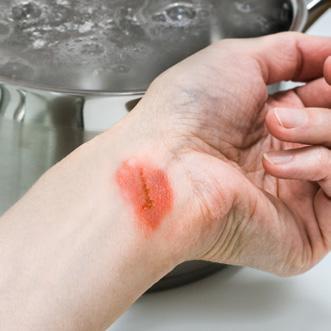
7. Avoid exercise if you’re sick
Studies have found that mild exercise may help you feel better faster. Lying in bed can weaken your muscles. Light exercise prompts you to breathe deeply and cough, which “gets things up.”

8. Rest when you have back pain
Regular physical activity is the most potent and best pain reliever,
say experts. You’ll recover faster if you remain active. Prolonged rest makes most types of back pain worse.
Movement can decrease your pain and stiffness, improve your range of motion, strengthen your muscles and increase your endurance, advised Benjamin Friedell, chief of primary care, Bassett Healthcare Network, Oneonta.
“It’s important to stay active!” he stressed. “Stay active with things that won’t cause you pain. Keep active, find an activity you like and keep doing it. Swimming is great. Even walking in the pool can be most helpful.”
9. If it’s an actual heart attack, you’ll have chest pain
“While the most typical symptom of a heart attack is chest pain, chest pain is not always se-vere or even the most noticeable symptom,” said Heather Evans, executive director, Ameri-can Heart Association, Mohawk Valley.
Both women and men can have a heart attack without chest pain. Evans said other symp-toms of a heart attack may include: “Pain down an arm or in the jaw. Shortness of breath, back pain, shoulder pain and gastrointestinal distress are symptoms that can be a heart at-tack.”
“A symptom to really watch out for is fatigue,” she added. “Pay attention if it’s a different kind of fatigue than you’re used to. Know your body so you can recognize when something is dif-ferent.”
Other symptoms of a heart attack include nausea or vomiting, sweating or heartburn, a feel-ing of indigestion.